Scheidt and Bachmann MT60 Multi-functional ticketing inspection device User Manual FareGo Move MT 60
Scheidt & Bachmann GmbH Multi-functional ticketing inspection device FareGo Move MT 60
UserManual
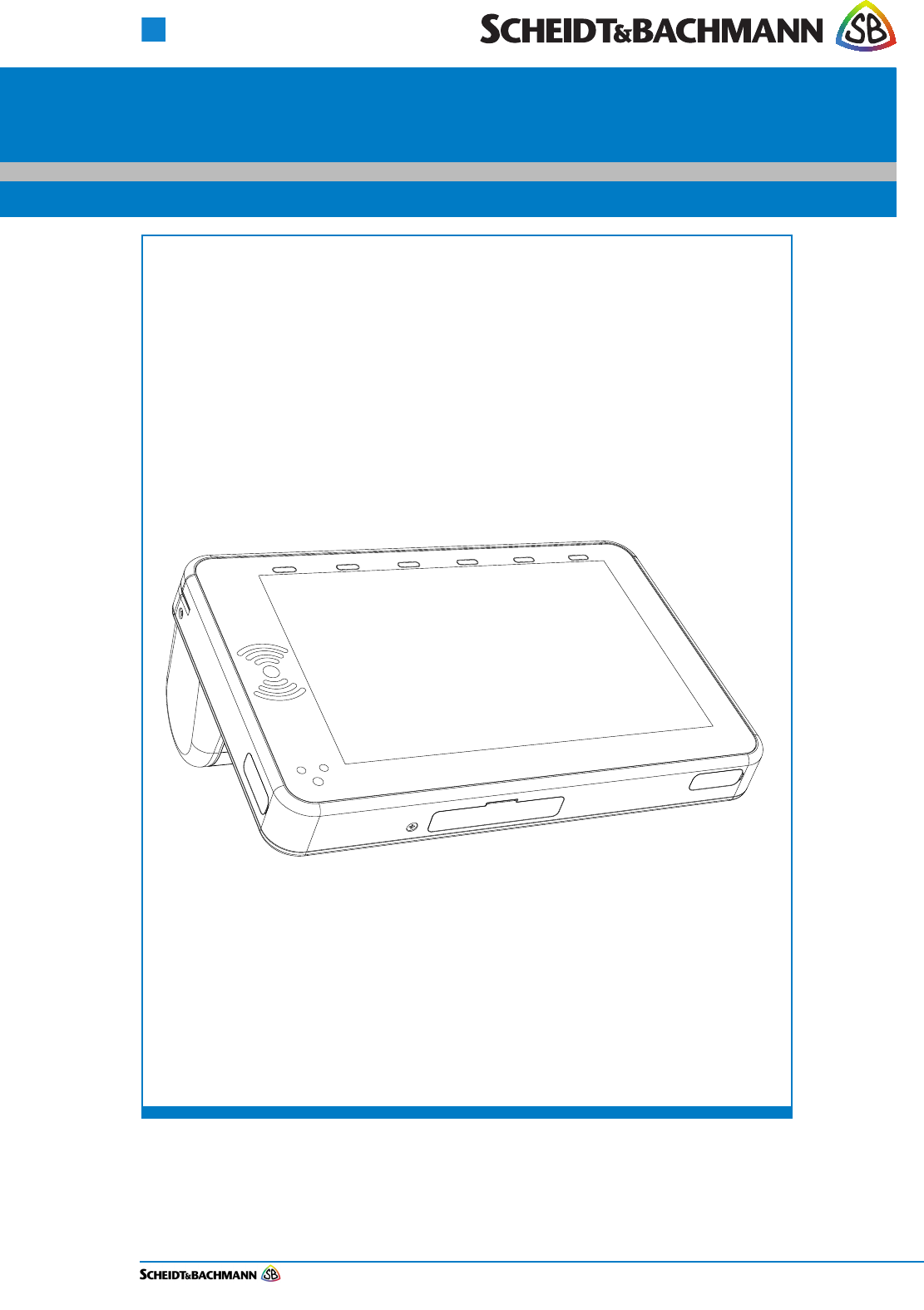
Edit: Stevens Art.#.: 86 -----, Version 1.8 Date:15.06.2016
Fare collection
systems
This manual, including all of its component parts, is copyright protected. Scheidt & Bachmann GmbH
reserves all rights to its contents. Any use not expressly approved by copyright law is subject to prior
approval by Scheidt & Bachmann GmbH. This applies particularly to copying, processing, translations
and microfilming, as well as to storage and data processing in any electronic systems.
State: June 2016
Customer Documentation
FareGo Move MT|60
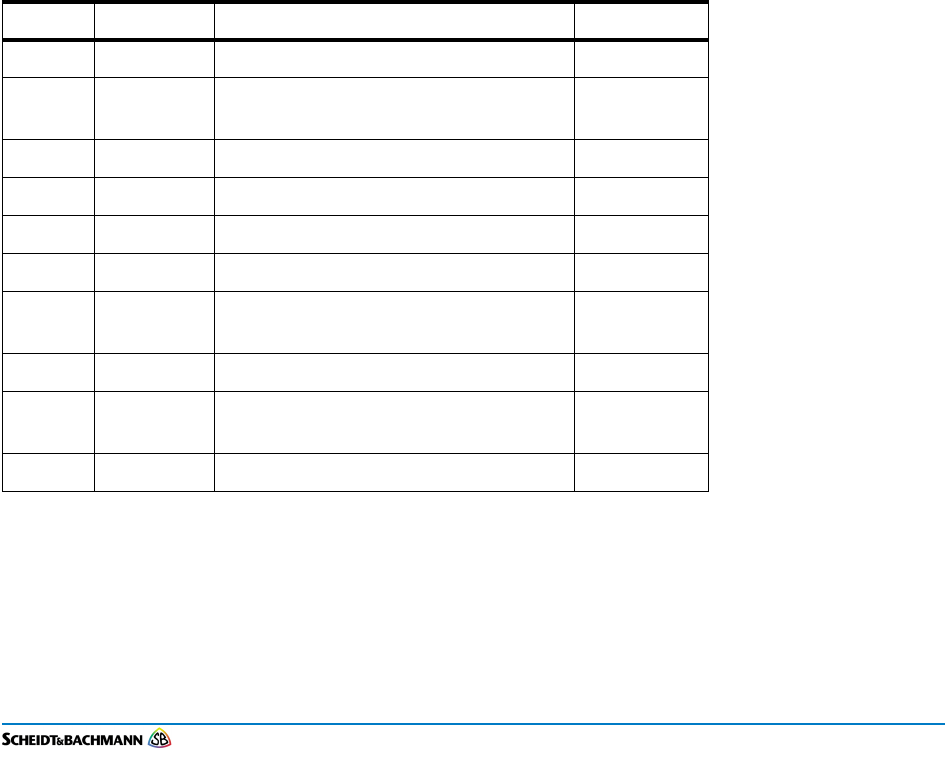
Edit: Stevens Art.#.: 86 -----, Version 1.8 Date:15.06.2016
All contents of this manual shall be treated confidentially and shall not be transferred to any third party, either
for their own commercial use or for any other client.
Since all information and facts are subject to technical changes, any liability for the data contained is hereby
disclaimed. Modifications of technical details, in terms of information and illustrations are reserved. Make
sure to follow the updating index. Scheidt & Bachmann GmbH cannot be held responsible for direct damage
and/or possible consequential damage due to misuse by the customer or by third parties, unless the Product
Liability Act (ProdHaftG) is concerned. In no event shall Scheidt & Bachmann GmbH be liable for any dam-
age out of or in connection with the provision of the manual.
© 2016 Scheidt & Bachmann GmbH, Fare collection system (FCS)
Breite Straße 132 41238 Mönchengladbach
www.scheidt-bachmann.com
Subject to change.
History
Version Date Change Edit
0.8 18.09.2014 First draft Stevens
1.0 24.09.2014 Formatting adapted to project
specifications
Stevens
1.1 25.08.2015 Subject to alterations by project manager Stevens
1.2 08.09.2015 Subject to alterations by project manager Stevens
1.3 15.09.2015 Safety hint for outlet inserted Stevens
1.4 03.12.2015 Power supply inforation changed Stevens
1.5 03.06.2016 Safety hint for "distance between the
radiator and body" inserted
Stevens
1.6 08.06.2016 Chapter "Protective Cover" inserted Stevens
1.7 09.06.2016 Chapter sequence corrected. Changes in
Chapter 4.13
Stevens
1.8 15.06.2016 Chapter 2 corrected. Stevens
Table 1-1
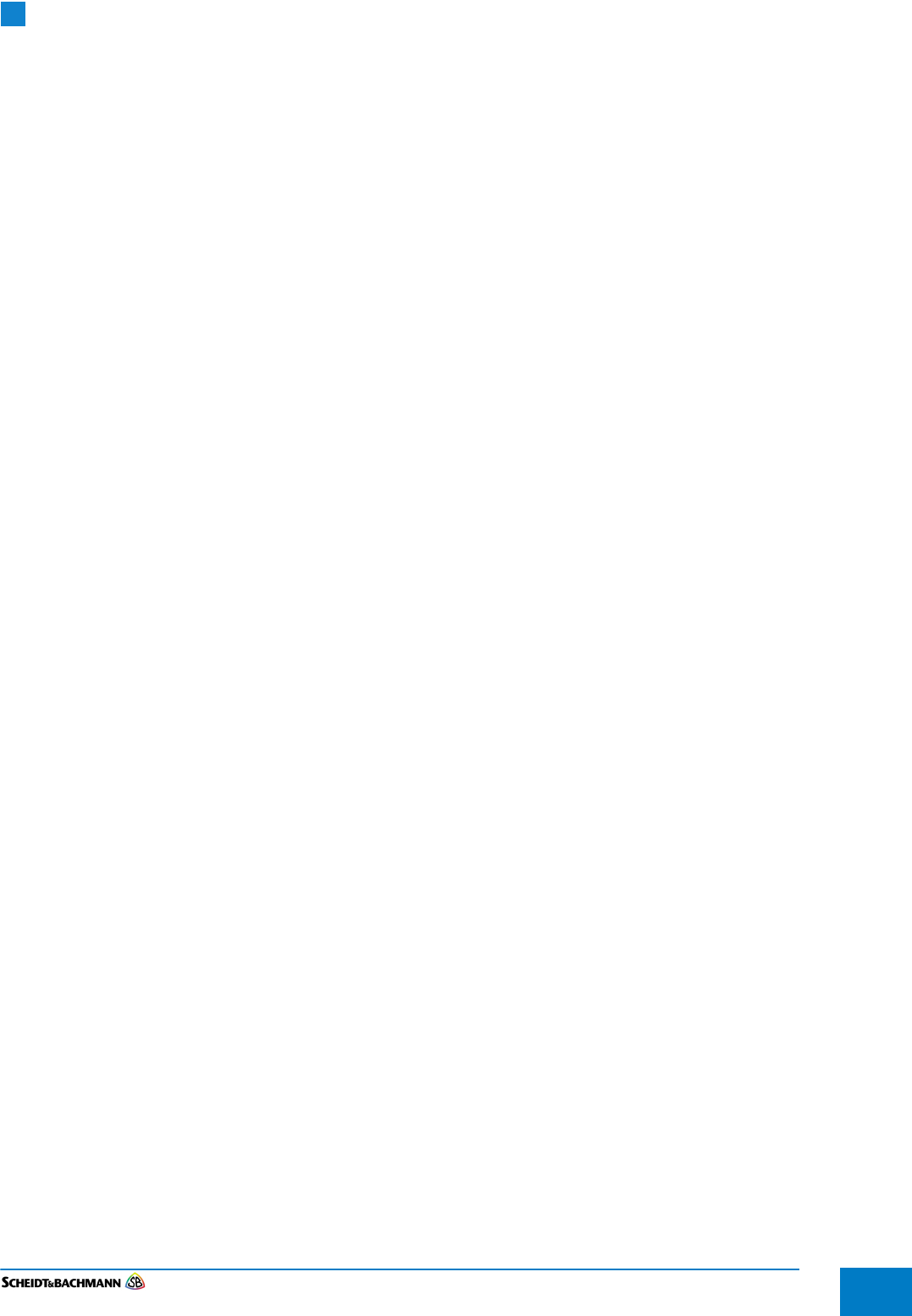
Edit: Stevens Art.#.: 86 -----, Version 1.8 Date:15.06.2016 1-1
Fare collection
systems
Chapter 1 Introduction
1.1 Preliminary observations ......................................................................1-1
1.2 Explanation of symbols.........................................................................1-1
Chapter 2 Declaration of Conformity
Chapter 3 Safety Features
3.1 Generally.................................................................................................3-1
3.1.1 Training ..................................................................................................................... 3-1
3.1.2 Warranty.................................................................................................................... 3-1
3.2 Notes for Service....................................................................................3-1
3.2.1 Electrostatic discharge............................................................................................ 3-1
3.3 Maintenance ...........................................................................................3-2
3.3.1 Proof .......................................................................................................................... 3-2
3.3.2 Cleaning intervals..................................................................................................... 3-2
3.3.3 Detergent................................................................................................................... 3-2
3.3.4 Define maintenance cycles...................................................................................... 3-2

Edit: Stevens Art.#.: 86 -----, Version 1.8 Date:15.06.2016
1-2
Chapter 4 General Module Description
4.1 General....................................................................................................4-3
4.2 Standards ...............................................................................................4-5
4.3 Life cycle costs ......................................................................................4-5
4.4 Dimensions.............................................................................................4-6
4.5 Printer .....................................................................................................4-7
4.5.1 Technical Specifications ......................................................................................... 4-7
4.6 Barcode Imager......................................................................................4-9
4.6.1 Technical Specifications ......................................................................................... 4-9
4.7 Battery...................................................................................................4-11
4.7.1 Technical Specifications ....................................................................................... 4-11
4.7.2 Operating time ........................................................................................................ 4-11
4.7.3 Battery change ....................................................................................................... 4-11
4.7.4 Battery Label........................................................................................................... 4-12
4.8 Display and touchscreen ....................................................................4-13
4.8.1 Technical Specifications ....................................................................................... 4-13
4.9 CPU Modul............................................................................................4-15
4.9.1 Technical Specifications ....................................................................................... 4-15
4.10 NFC - Reader ........................................................................................4-17
4.10.1 Cards Standards..................................................................................................... 4-17
4.10.2 eTicketing Standards ............................................................................................. 4-17
4.11 Magnetic Stripe Reader .......................................................................4-19
4.11.1 Technical Specifications ....................................................................................... 4-19
4.12 Communication Modules ....................................................................4-21
4.12.1 Bluetooth.................................................................................................................4-21
4.12.2 WiFi.......................................................................................................................... 4-21
4.12.3 Mobile ...................................................................................................................... 4-21
4.12.4 USB.......................................................................................................................... 4-21
4.12.5 GPS (optional) ........................................................................................................ 4-21
4.13 Protective Cover ..................................................................................4-23
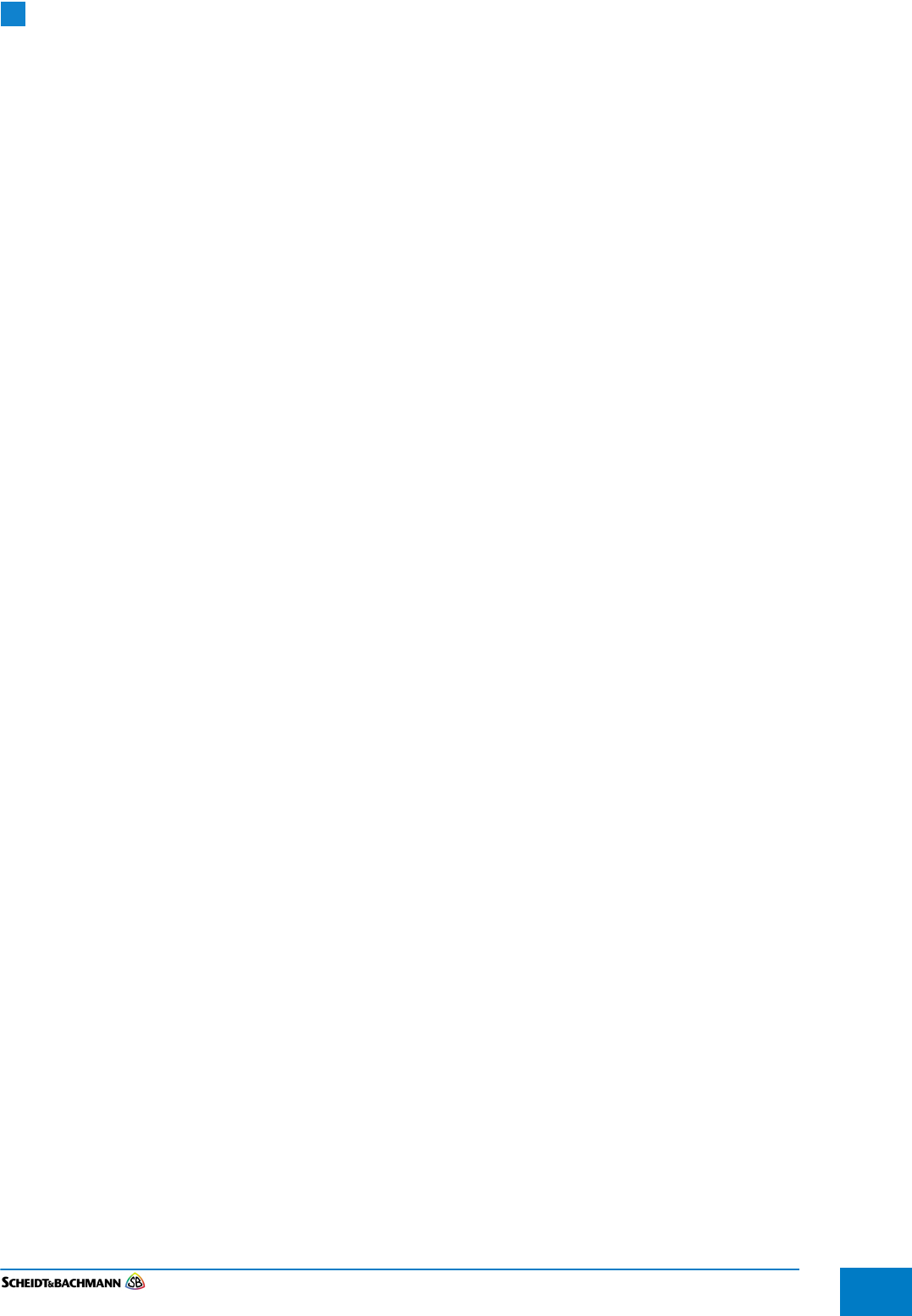
Edit: Stevens Art.#.: 86 -----, Version 1.8 Date:15.06.2016 1-3
Fare collection
systems
Chapter 5 Commissioning
5.1 Insert SIM, SAM, and micro SD Card....................................................5-1
5.2 Insert battery ..........................................................................................5-1
5.3 Recharge battery....................................................................................5-2
5.4 Insert Paper ............................................................................................5-3
5.5 Switch On/Off .........................................................................................5-6
5.6 First Start ................................................................................................5-6
Chapter 6 Explanation of terms

Edit: Stevens Art.#.: 86 -----, Version 1.8 Date:15.06.2016
1-4
THIS PAGE INTENTIONALLY BLANK.
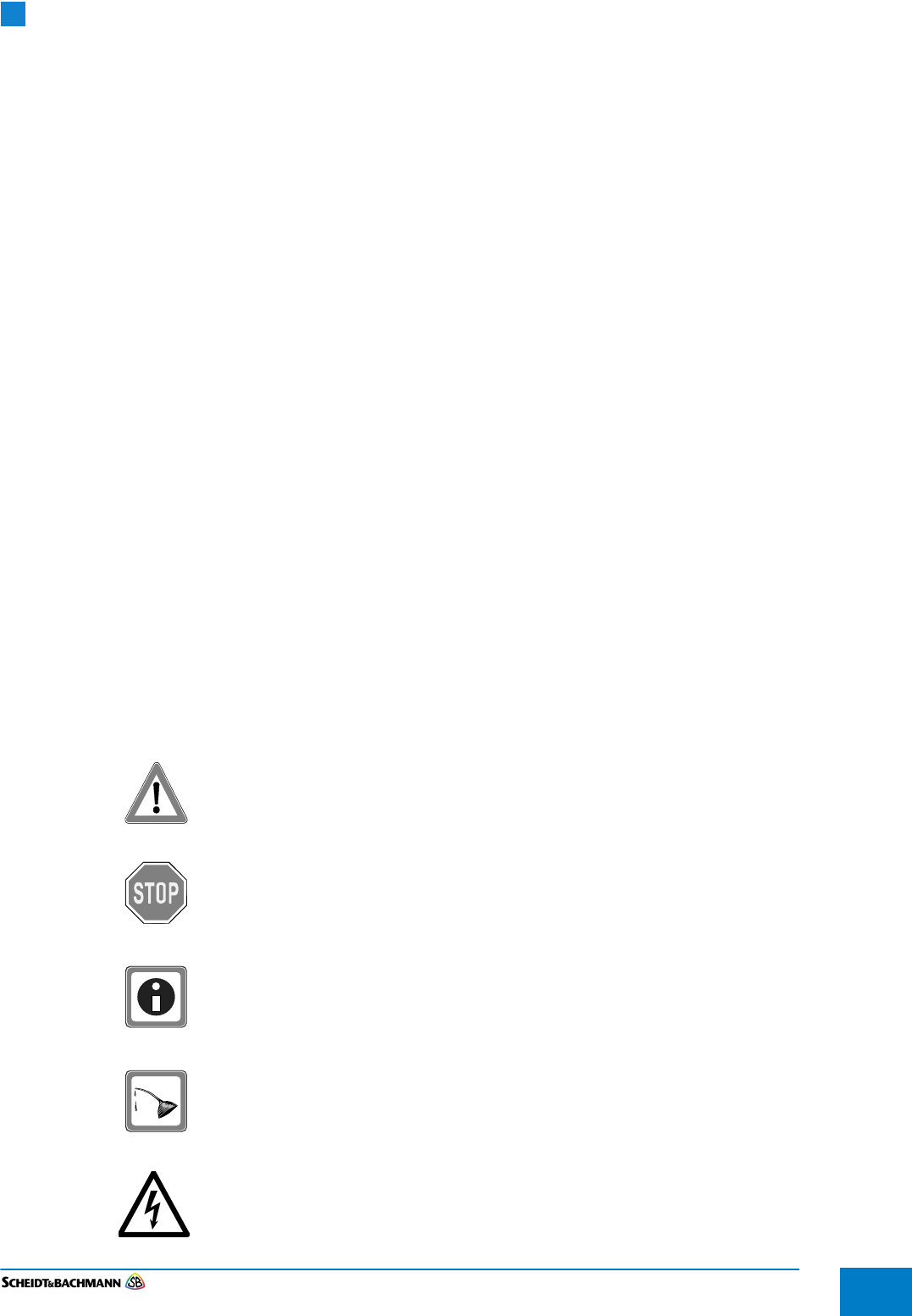
Chapter 1
Introduction
Edit: Stevens Art.#.: 86 -----, Version 1.8 Date:15.06.2016 1-1
Fare collection
systems
Chapter 1 Introduction
1.1 Preliminary
observations
The aim of this manual is to provide knowledge on handling and work processes
that ensure that the device is working properly throughout its lifetime.
All activities that are necessary to meet this requirement, were included in this
manual
All activities can be performed by the staff, safely, easily, ergonomically and with-
out tools.
Organization of This Guide
1. Chapter - Introduction
2. Chapter - Declaration of Conformity
3. Chapter - Safety Features
4. Chapter - General Module Description
5. Chapter - Commissioning
6. Chapter - Explanation of terms
1.2 Explanation
of symbols
This symbol indicates a WARNING. A detailed description of the particular
hazard will appear next to the symbol in bold, italic print.
This symbol indicates a CAUTION. A detailed description of the particular
hazard will appear next to the symbol in bold, italic print.
This symbol indicates that more INFORMATION follows. A detailed
description of the particular hazard will appear next to the symbol in bold,
italic print.
This symbol indicates that lubrication is necessary. A detailed description
of the task will appear next to the symbol in bold, italic print.
This symbol indicates possibility of ELECTRICAL HAZARD. A detailed
description of the particular hazard will appear next to the symbol in bold,
italic print.
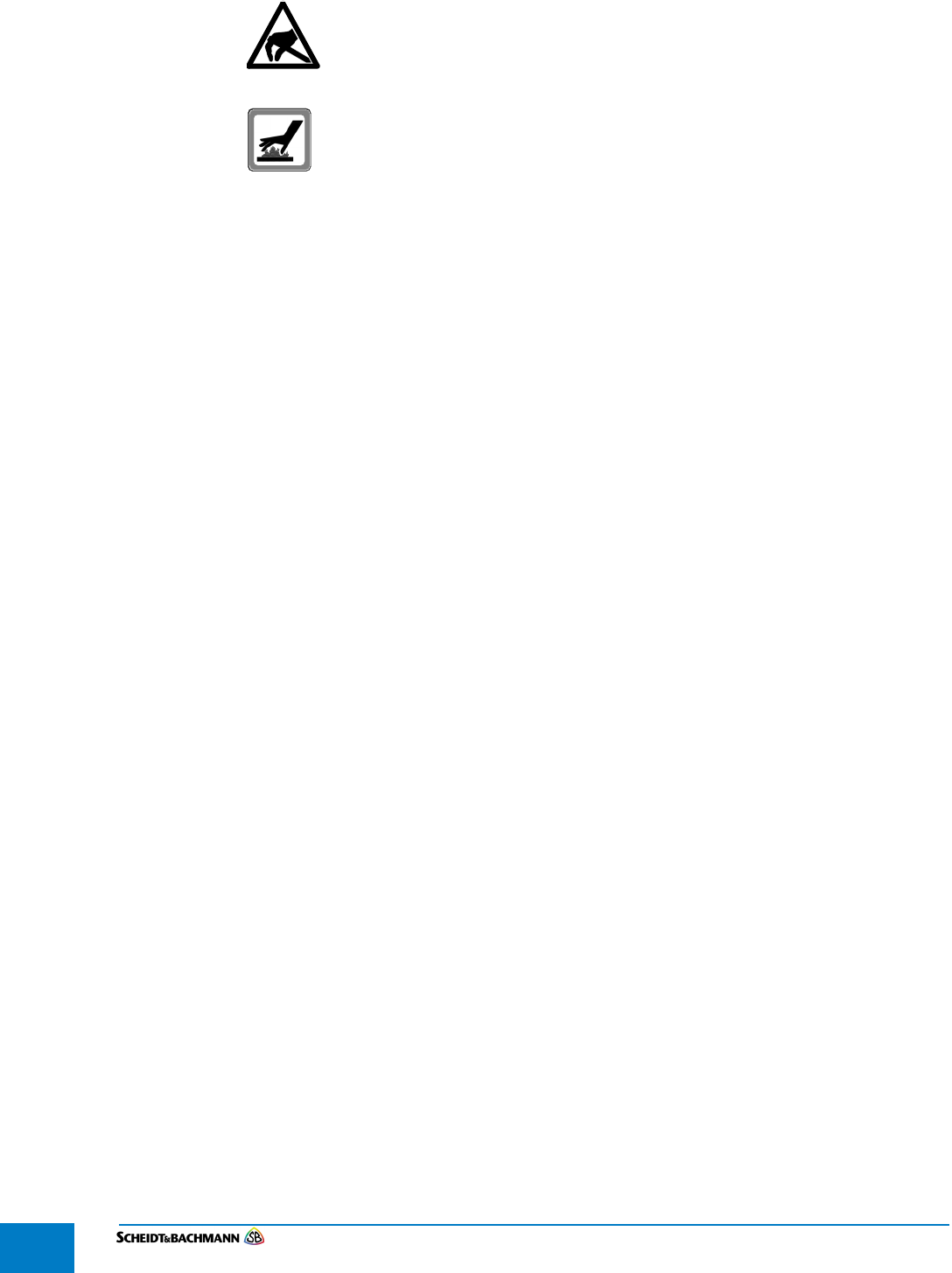
Chapter 1
Introduction
Edit: Stevens Art.#.: 86 -----, Version 1.8 Date:15.06.2016
1-2
This symbol indicates an ESD HAZARD. A detailed description of the
particular hazard will appear next to the symbol in bold, italic print.
This symbol indicates a RISK OF BURNS. A detailed description of the
particular hazard will appear next to the symbol in bold, italic print.
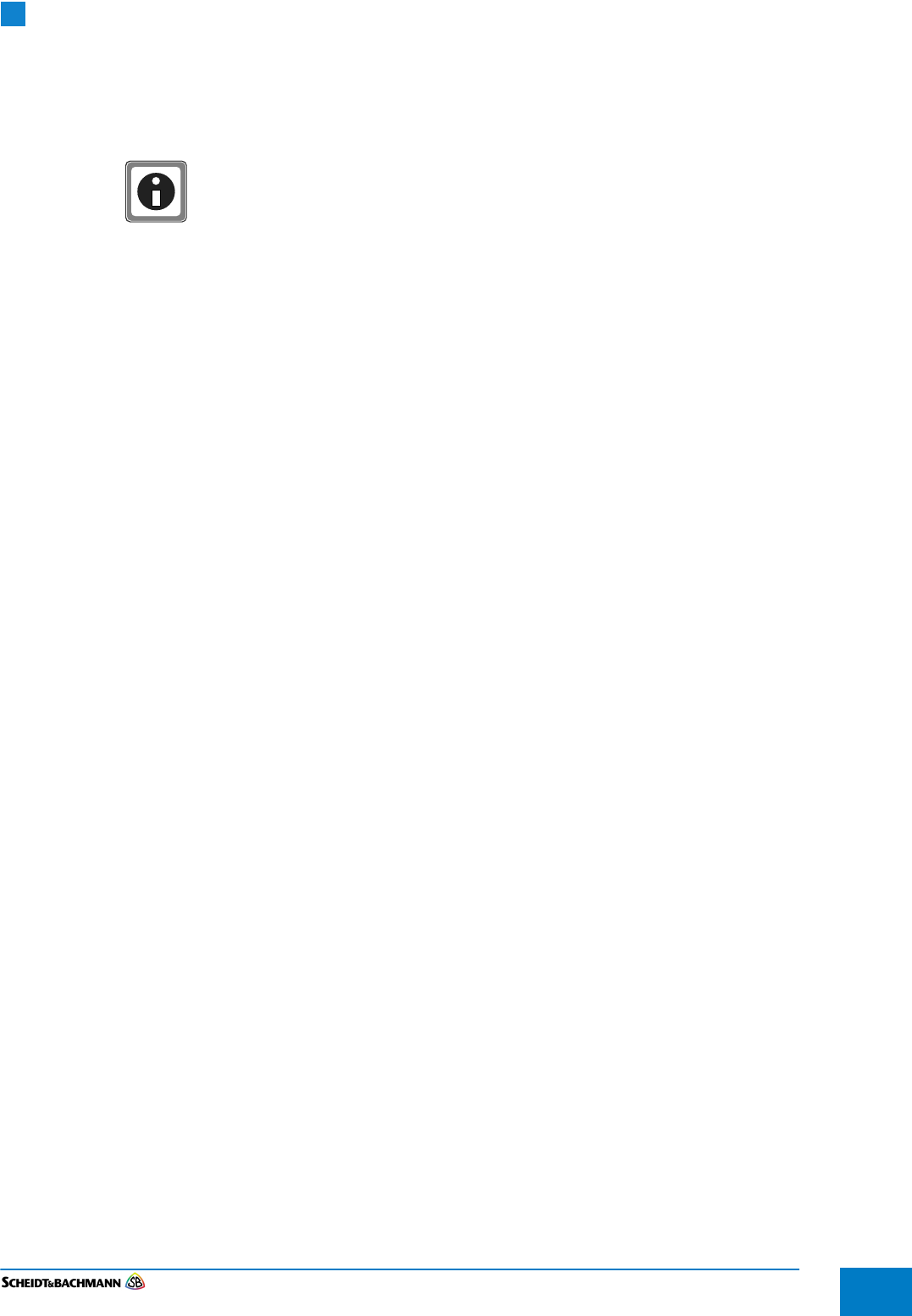
Chapter 2
Declaration of Conformity
Edit: Stevens Art.#.: 86 -----, Version 1.8 Date:15.06.2016 2-1
Fare collection
systems
Chapter 2 Declaration of Conformity
This Declaration is valid as soon as CE,FCC and IC certifications are available.
NOTICE:
This device complies with Part 15 of the FCC Rules and with Industry Canada
licence-exempt RSS standard(s).
Operation is subject to the following two conditions:
1. this device may not cause harmful interference, and
2. this device must accept any interference received, including interference that
may cause undesired operation.
Le présent appareil est conforme aux CNR d'Industrie Canada applicables aux
appareils radio
exempts de licence. L'exploitation est autorisée aux deux conditions suivantes:
(1) l'appareil ne doit pas produire de brouillage, et
(2) l'utilisateur de l'appareil doit accepter tout brouillage radioélectrique subi,
même si le brouillage est susceptible d'en compromettre le fonctionnement.
NOTICE:
Changes or modifications made to this equipment not expressly approved by
(manufacturer name) may void the FCC authorization to operate this equipment.
Radiofrequency radiation exposure Information:
This equipment complies with FCC radiation exposure limits set forth for an
uncontrolled environment. To ensure the minimum operating distance between
the radiator and your body a protective cover is attached to the equipment. See
Chapter 4.13 for more details. This protective cover must not be removed if the
equipment is used in the USA or Canada. This transmitter must not be co-
located or operating in conjunction with any other antenna or transmitter.
The radiated output power of the device is far below the FCC radio frequency
exposure limits. Nevertheless, the device shall be used in such a manner that
the potential for human contact during normal operation is minimized.
For body worn operation, this equipment has been tested and meets the FCC
RF exposure guidelines when used with the Scheidt & Bachmann accessories
supplied or designated for this product. Use of other accessories may not ensure
compliance with FCC RF exposure guidelines.

Chapter 2
Declaration of Conformity
Edit: Stevens Art.#.: 86 -----, Version 1.8 Date:15.06.2016
2-2
NOTE: This equipment has been tested and found to comply with the limits for
a Class B digital device, pursuant to Part 15 of the FCC Rules. These limits are
designed to provide reasonable protection against harmful interference when
the equipment is operated in a commercial environment. This equipment gener-
ates, uses, and can radiate radio frequency energy and, if not installed and used
in accordance with the instruction manual, may cause harmful interference to
radio communications. Operation of this equipment in a residential area is likely
to cause harmful interference in which case the user will be required to correct
the interference at his own expense.
NOTE: This equipment has been tested and found to comply with the limits for
a Class B digital device, pursuant to Part 15 of the FCC Rules. These limits are
designed to provide reasonable protection against harmful interference in a
residential installation. This equipment generates, uses and can radiate radio
frequency energy and, if not installed and used in accordance with the
instructions, may cause harmful interference to radio communications.
However, there is no guarantee that interference will not occur in a particular
installation. If this equipment does cause harmful interference to radio or
television reception, which can be determined by turning the equipment off and
on, the user is encouraged to try to correct the interference by one or more of
the following measures:
Reorient or relocate the receiving antenna.
Increase the separation between the equipment and receiver.
Connect the equipment into an outlet on a circuit different from that to which
the receiver is connected.
Consult the dealer or an experienced radio/TV technician for help.
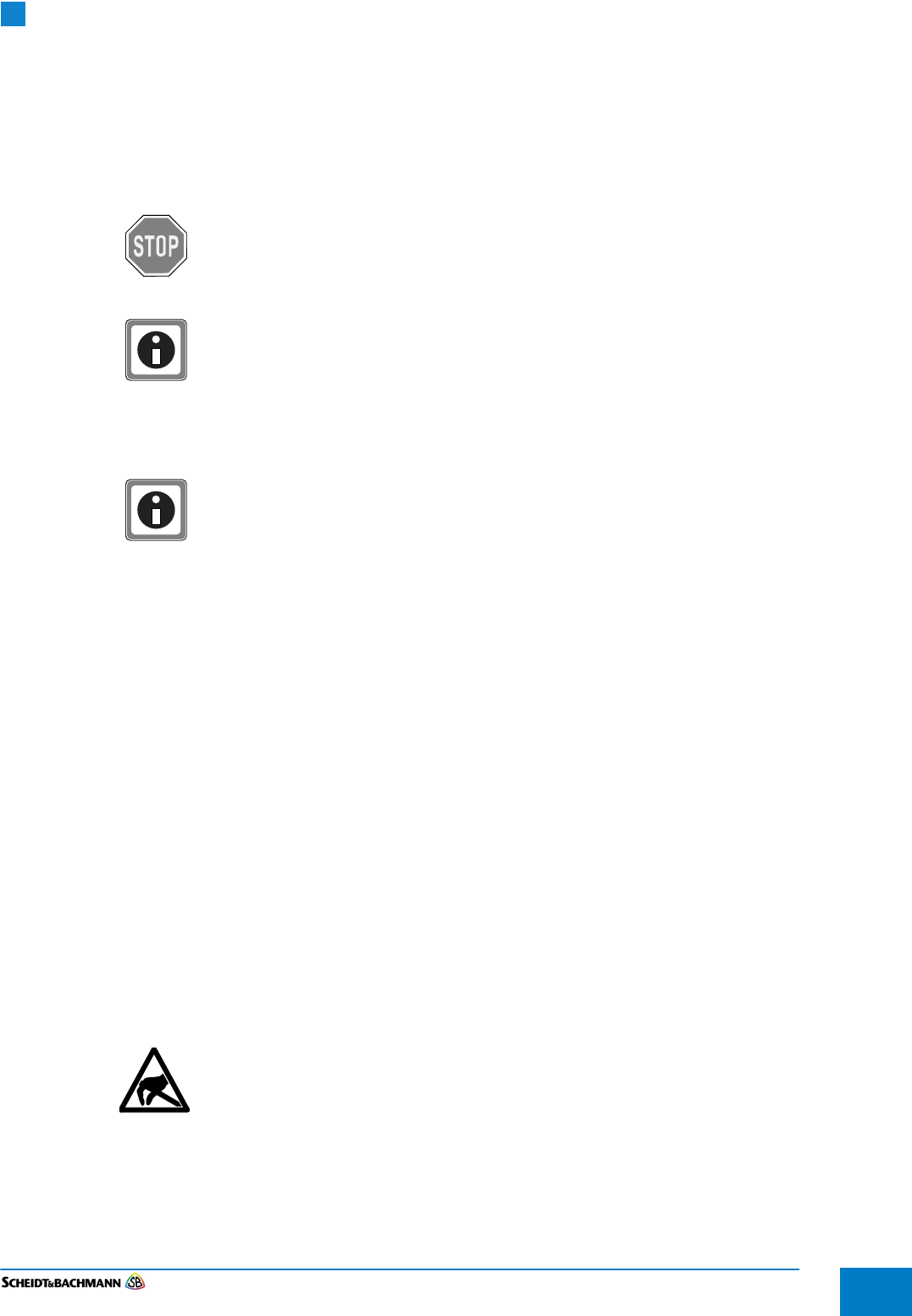
Chapter 3
Safety Features
Edit: Stevens Art.#.: 86 -----, Version 1.8 Date:15.06.2016 3-1
Fare collection
systems
Chapter 3 Safety Features
3.1 Generally
All operations such as installation, service, and maintenance must be
performed only by trained and qualified personnel! Incorrectly performed
installation, maintenance or repair actions may damage the unit.
The manual is subject to constant revisions due to constantly new
discoveries and newly emerging as experiences from long-term use.
Check your documentation is always up to date.
3.1.1 Training
The manual alone is not capable of performing the service. In addition to
the documents a training at Scheidt & Bachmann is possible.
To carry out maintenance and repair work on the device, the contained in
this document has to be considered in the current version.
3.1.2 Warranty The proper execution of all maintenance and repair work, particularly the obser-
vance of maintenance intervals and the correct and proper implementation of
service activities with the tools and practices described in these documents , is
a prerequisite for the validity of the contractual warranty agreement.
Instructions to service personnel that are generated from the maintenance
framework of your software application shall comply with the statements of these
documents, otherwise the contract warranty lose their validity.
The power supply is designed exclusively for the power supply of the device.
When used in other applications, the contract warranty will be invalid.
The lower limit of the storage temperature of -20 ° C must not be exceeded.
3.2 Notes for
Service
Before opening the device, the accumulator and the power supply had to be
removed.
3.2.1 Electrostatic
discharge
The components are used in the device, can be destroyed by electrostatic
discharge. For this reason, generally wear a grounding ring during
maintenance -and repair work and work in the workshop.
During Service actions in the field, where direct or indirect contact with
electrical components can accur, the use of a grounding ring is
recommended.

Chapter 3
Safety Features
Edit: Stevens Art.#.: 86 -----, Version 1.8 Date:15.06.2016
3-2
3.3 Maintenance
3.3.1 Proof The Proof of maintenance cycle compliance and the regularity of the mainte-
nance and repair work is up to the customer.
3.3.2 Cleaning
intervals
The cleaning intervals had to be chosen so that, depending on the frequentation,
no dangerous levels of paper dust and dirt can arise.
3.3.3 Detergent By using detergent for plastic parts, the manufacturer information shall be fol-
lowed so that these parts do not become brittle.
3.3.4 Define
maintenance
cycles
Scheidt & Bachmann reserves the right to change the guidelines of the mainte-
nance cycles. Especially the printer. As a result of the knowledge from field
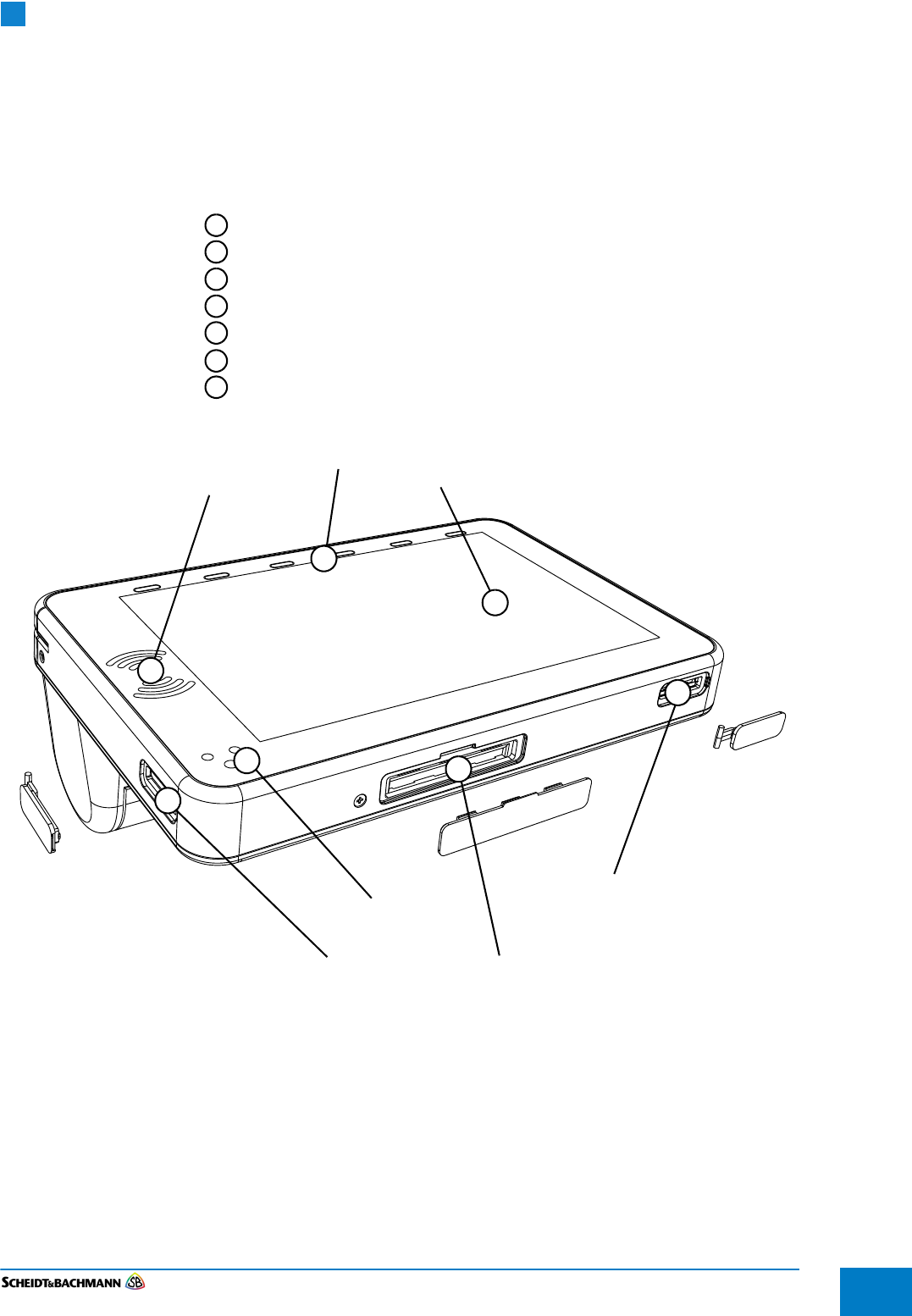
Chapter 4
General Module Description
Edit: Stevens Art.#.: 86 -----, Version 1.8 Date:15.06.2016 4-3
Fare collection
systems
Chapter 4 General Module Description
4.1 General The following illustrations show a list of all, for the users certain, components of
the MT|60.
Figure 4-1: Component Overview 1
Reading area for contactless Smart Cards
Hotkeys
Display / Touchscreen
micro SIM card slot
Light sensor / status LEDs
SAM card slot
micro SD card slot
1
7
2
3
4
5
6
Reading area for contactless Smart Cards
6 Hotkeys
Display/Touchscreen
micro SD card slot
SAM card slot
Light sensor /
micro SIM card slot
status LEDs
1
2
3
4
56
7
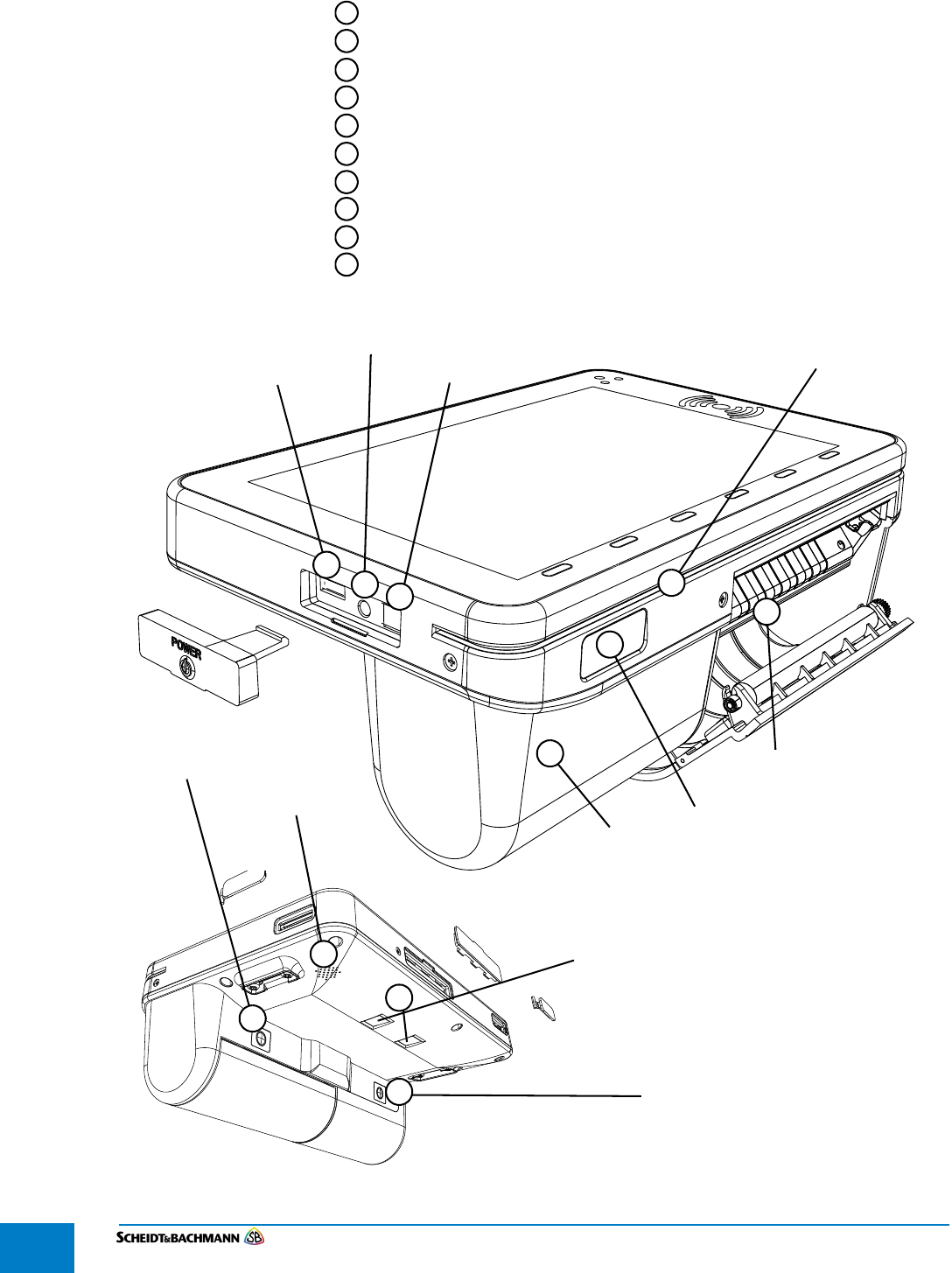
Chapter 4
General Module Description
Edit: Stevens Art.#.: 86 -----, Version 1.8 Date:15.06.2016
4-4
Figure 4-2: Component Overview 2
micro USB socket
On/Off button
Charging socket
Accu
Barcode Imager
Magnetic Card Reader
Printer
Thumb buttons
Speaker
Charging pins (cradle)
9
10
11
12
13
14
15
16
17
8
micro USB socket
On/Off button
Charging socket
Printer
Accu
Barcode Imager
Speaker
Charging pins (cradle)
Thumb button 1
Thumb button 2
8
910
Magnetic Card Reader
13
11
12
14
15
15
16
17
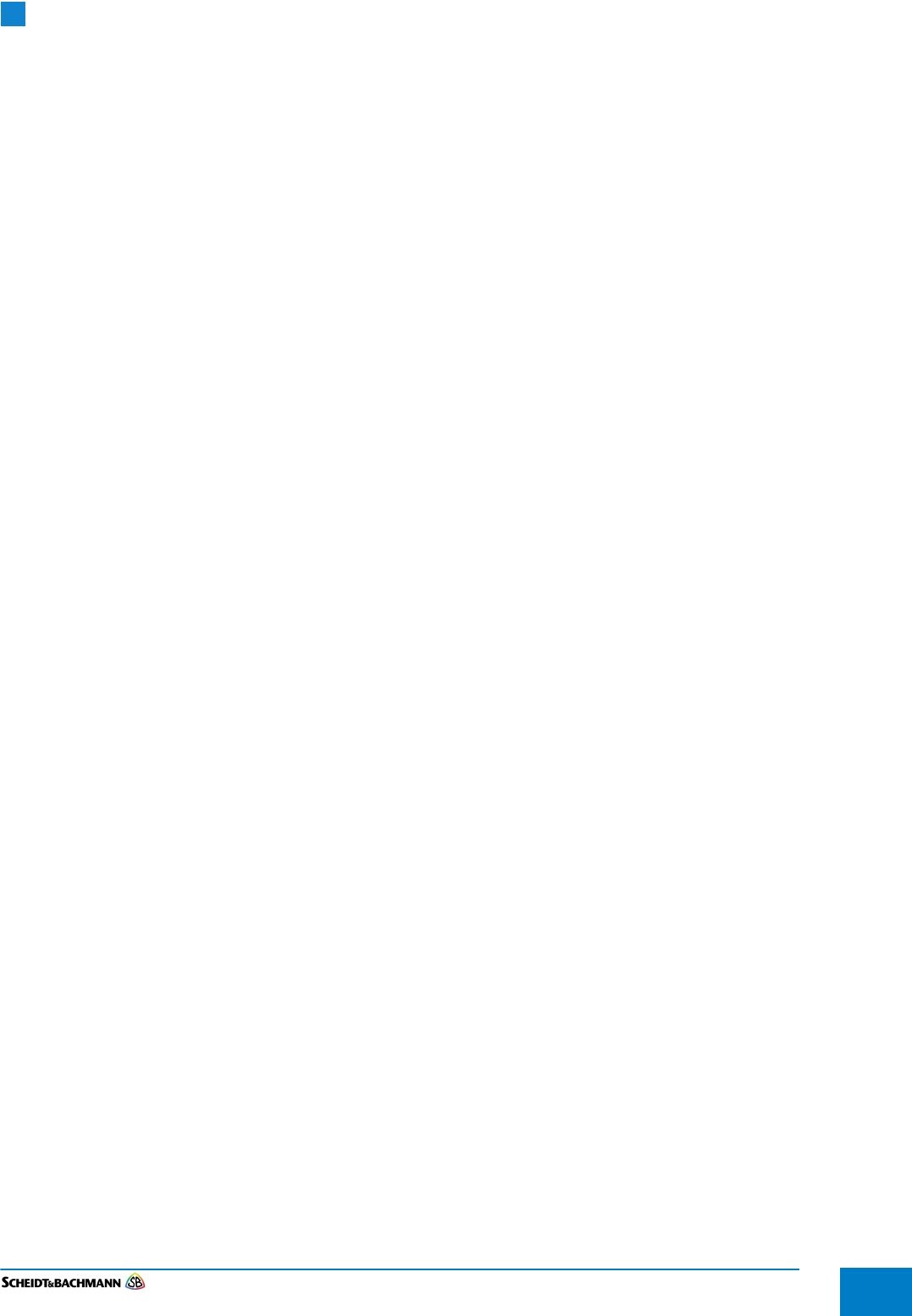
Chapter 4
General Module Description
Edit: Stevens Art.#.: 86 -----, Version 1.8 Date:15.06.2016 4-5
Fare collection
systems
4.2 Standards The MT|60 conforms to the following standards:
EN60950-1 Edition 2, IEC60950-1 - safety
EN60825-1, IEC60825-1 - Safety of laser products
(The MT60 do not bear any laser. The barcode imager works with a LED
aimer in compliance to class 1)
IEC60529, IP54 - IK07 Protection of enclosures
Radio - R&TTE Direktive
EN 55022 Class B - electromagnetic compatibility (EMC)
EN 55024 - noise immunity characteristics
Approvals cTÜV-Süd-us (NRTL) and FCC and IC- regulations
conformities, approvals
CE, RoHS, WEEE - conformities and guidelines
ETSI EN 300019-2-7 - vibration resistance
4.3 Life cycle
costs
All components of the MT | 60 are subject to aging. This wear automatically
picks up after a few years. These components must be revised or replaced
before the their life cycle end is reached, So before the aging process/wear of
the components leads to major disruptions.
Parts in this context are:
Battery
Display
Printer
Paper tray
SD-Card
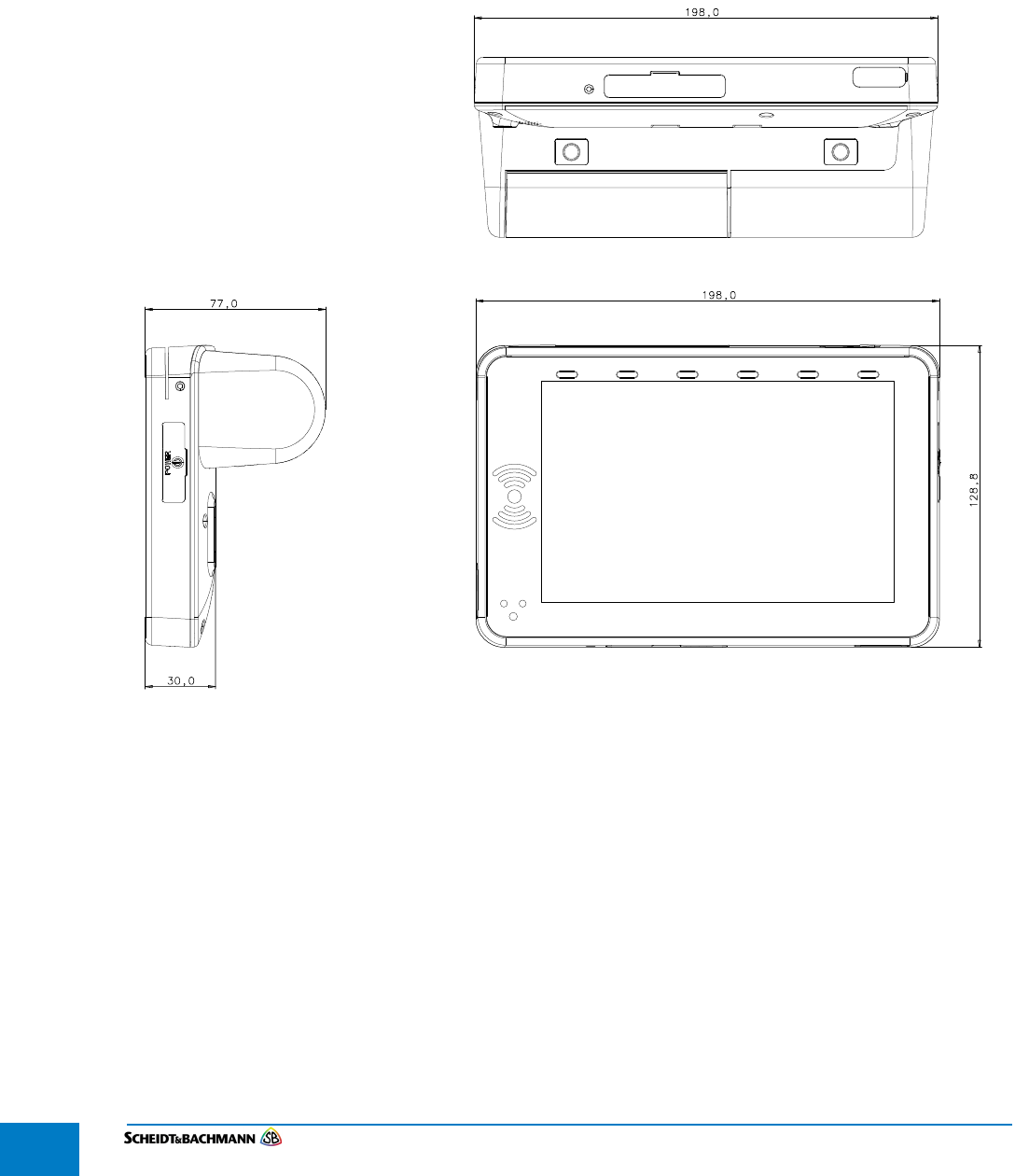
Chapter 4
General Module Description
Edit: Stevens Art.#.: 86 -----, Version 1.8 Date:15.06.2016
4-6
4.4 Dimensions
Length: 198,0 mm
Width: 128,5 mm
Height control unit: 30,0 mm
Height incl. Battery u. Printer tray: 77,0 mm
Figure 4-3: Dimensions
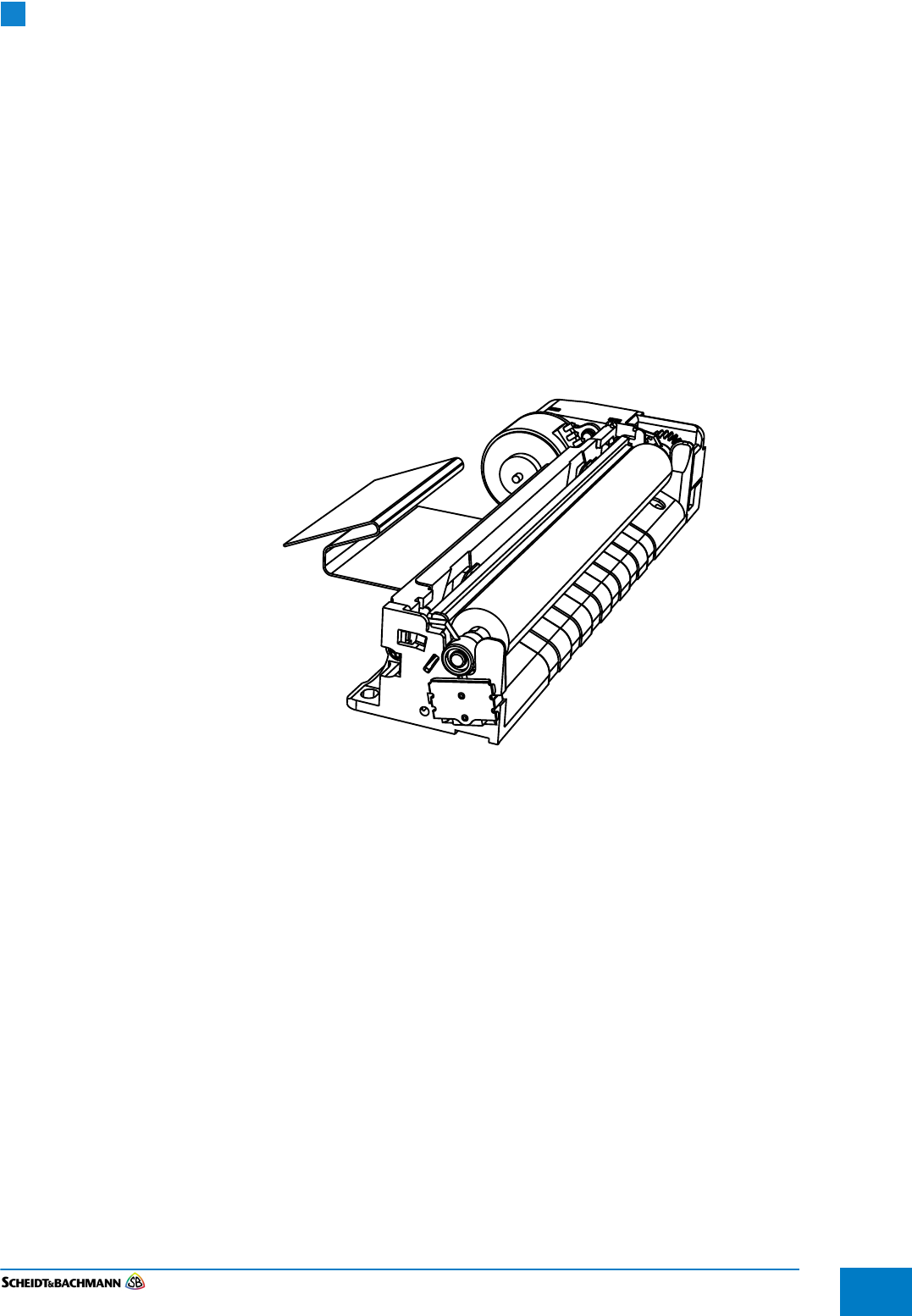
Edit: Stevens Art.#.: 86 -----, Version 1.8 Date:15.06.2016 4-7
Fare collection
systems
4.5 Printer The MT|60 is equipped with a high performance thermal printer for printing tick-
ets and receipts. The printer is integrated in the case of the MT|60.
4.5.1 Technical
Specifications
Resolution: 200 dpi
Paper width: 82,5 mm
Print width: Effective printing width max. 72 mm
Maximum allowed paper weight: 60 - 80 g/m²
Paper feed: "Easyload" Paper-insertion mechanism
Print speed: 10 cm Ticket in max. 10 Seconds.
Paper tear-off edge: Manual separation edge with corrosion-resistant metal
edge
Paper capacity: 10 m
Figure 4-4: Printer

Edit: Stevens Art.#.: 86 -----, Version 1.8 Date:15.06.2016
4-8
THIS PAGE INTENTIONALLY BLANK.
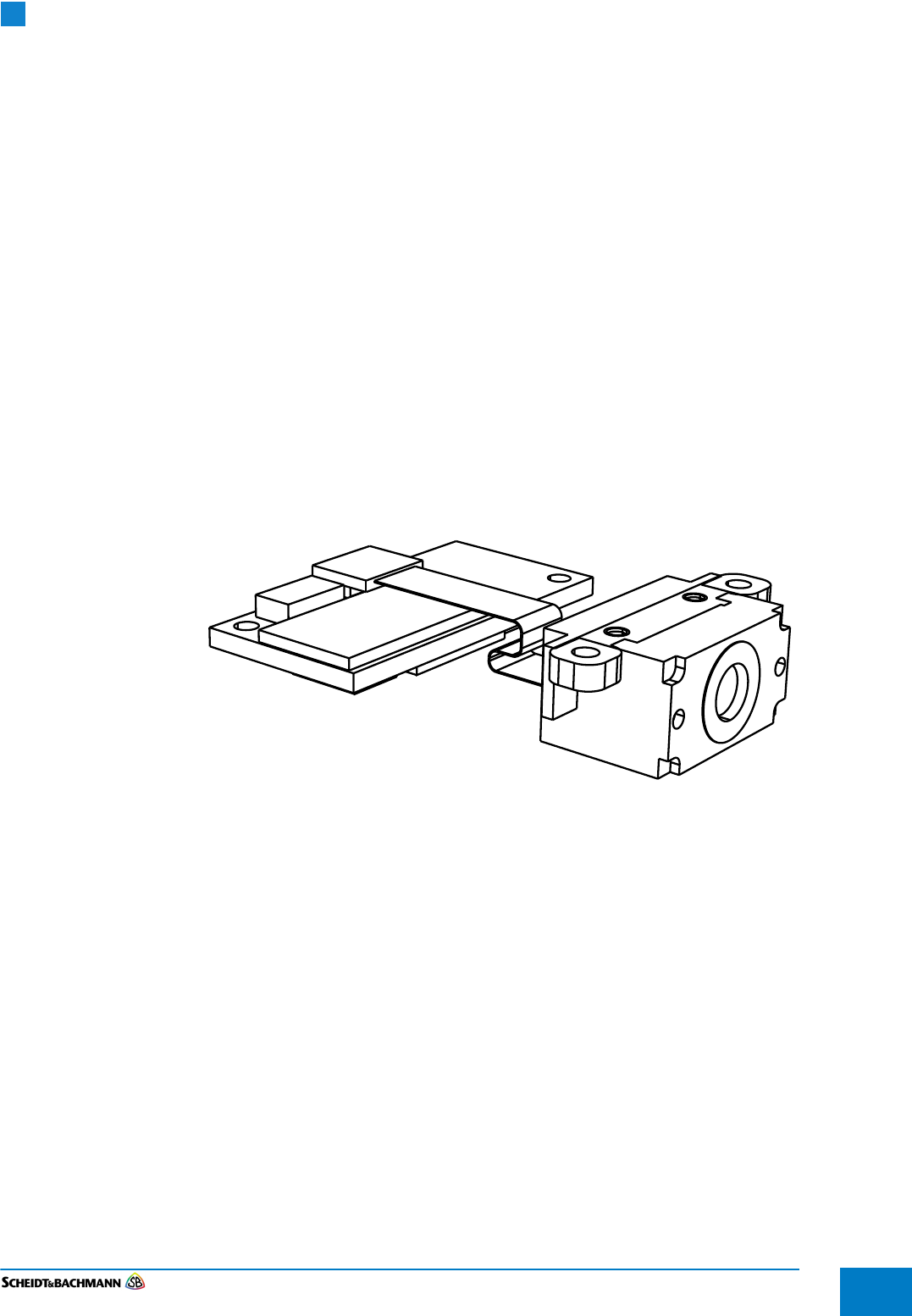
Edit: Stevens Art.#.: 86 -----, Version 1.8 Date:15.06.2016 4-9
Fare collection
systems
4.6 Barcode
Imager
For the evaluation of barcodes (1D/2D) a barcode-imager is integated in the
MT|60.
4.6.1 Technical
Specifications
The imager includes a CMOS camera for reading bar codes from a paper tem-
plate or from a screen of a cell phone.
The bar code reader supports 1D and 2D barcodes. Accordance with the follow-
ing specification.
1-D Barcodes: Code 128
2-D Barcodes: Aztec
PDF417
QR Code
Data of the barcode reader:
Reading range: 6-15 cm
LED Eye Safety: Class 1 category (safest class)
Figure 4-5: Barcode Imager
Optional: Camera with 5 mega pixels eCAM57 (S&B Art. # 51802760)

Edit: Stevens Art.#.: 86 -----, Version 1.8 Date:15.06.2016
4-10
THIS PAGE INTENTIONALLY BLANK.
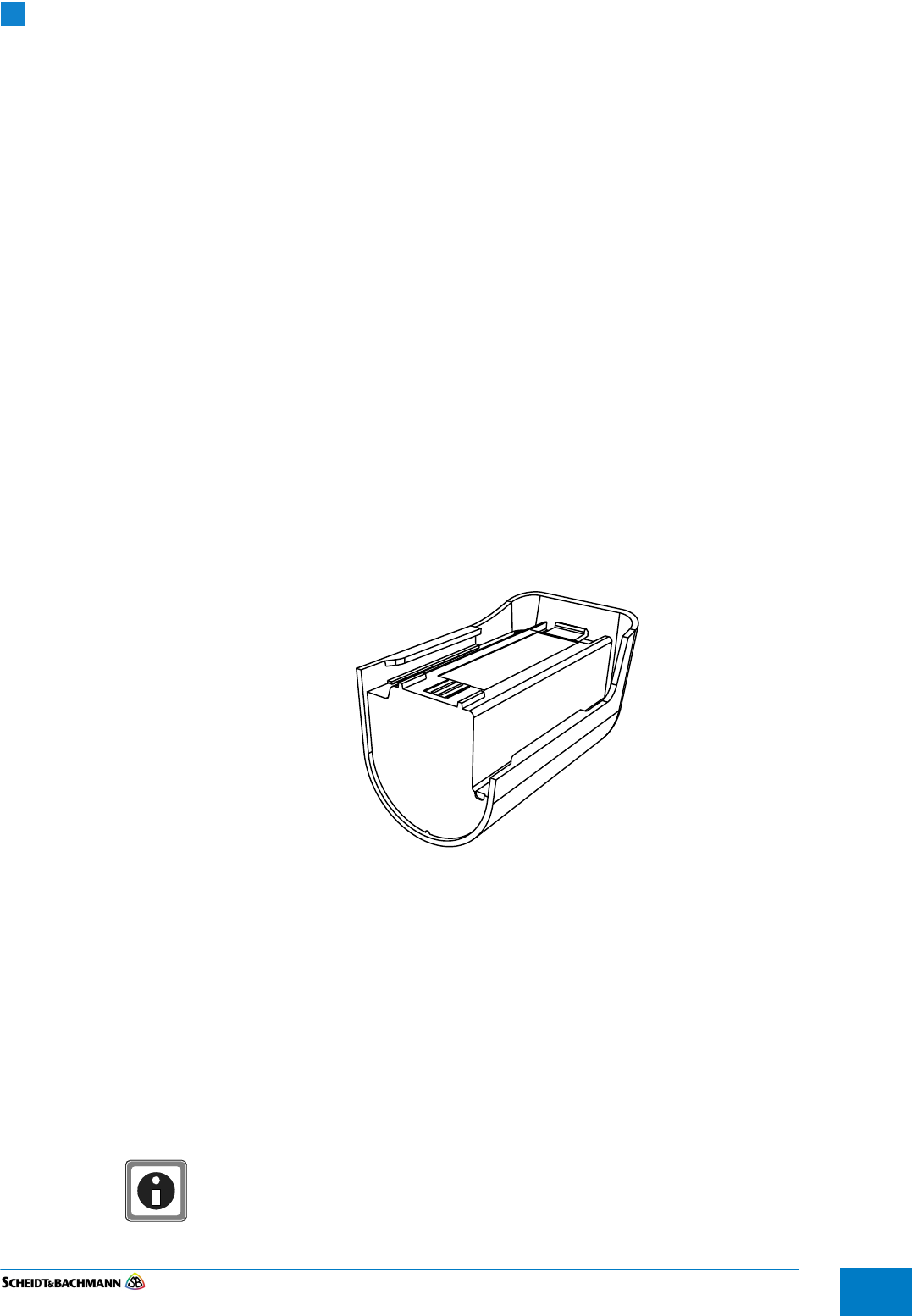
Edit: Stevens Art.#.: 86 -----, Version 1.8 Date:15.06.2016 4-11
Fare collection
systems
4.7 Battery During mobile operation the device is powered by a powerful Li-Ion battery.
4.7.1 Technical
Specifications Voltage: 7,2 V
Charging voltage: 8.4 V
Power: 24.48 Wh
Capacity: 3400 mAh
max. Charging current: 1625 mA
max. Current drain: 4875 mA
Charging time: <5 hours to 10% - 90% of the charge capacity
Battery replacement: Battery replacement without tools in operation
(Hot swapping)
Battery technology: lithium-ion battery (no memory effect)
Discharge temperature: -20 ° C to + 60 ° C
4.7.2 Operating time The device runtime is >8 hours at normal shift conditions. The operating time
depends on the software applications, wireless operation settings, power man-
agement settings, the brightness of the LCD screen and the ambient conditions.
Figure 4-6: Battery
4.7.3 Battery change The device has an integrated energy storage (backup battery) that allows bat-
tery replacement without shutting down the unit (hot swapping). With the
removal of the battery, the device goes into Sleep mode and reduced inter alia
the back light of the display to reduce the power consumption of the integrated
energy storage.
The integrated energy storage is charged in operation mode by the battery. This
allows a continuous operation of the device.
The internal energy storage can backup the device for a period of about 5 min-
utes to replace the battery.
The outlet to recharge the MT-60 must be installed near the device and
must be easily accessible.
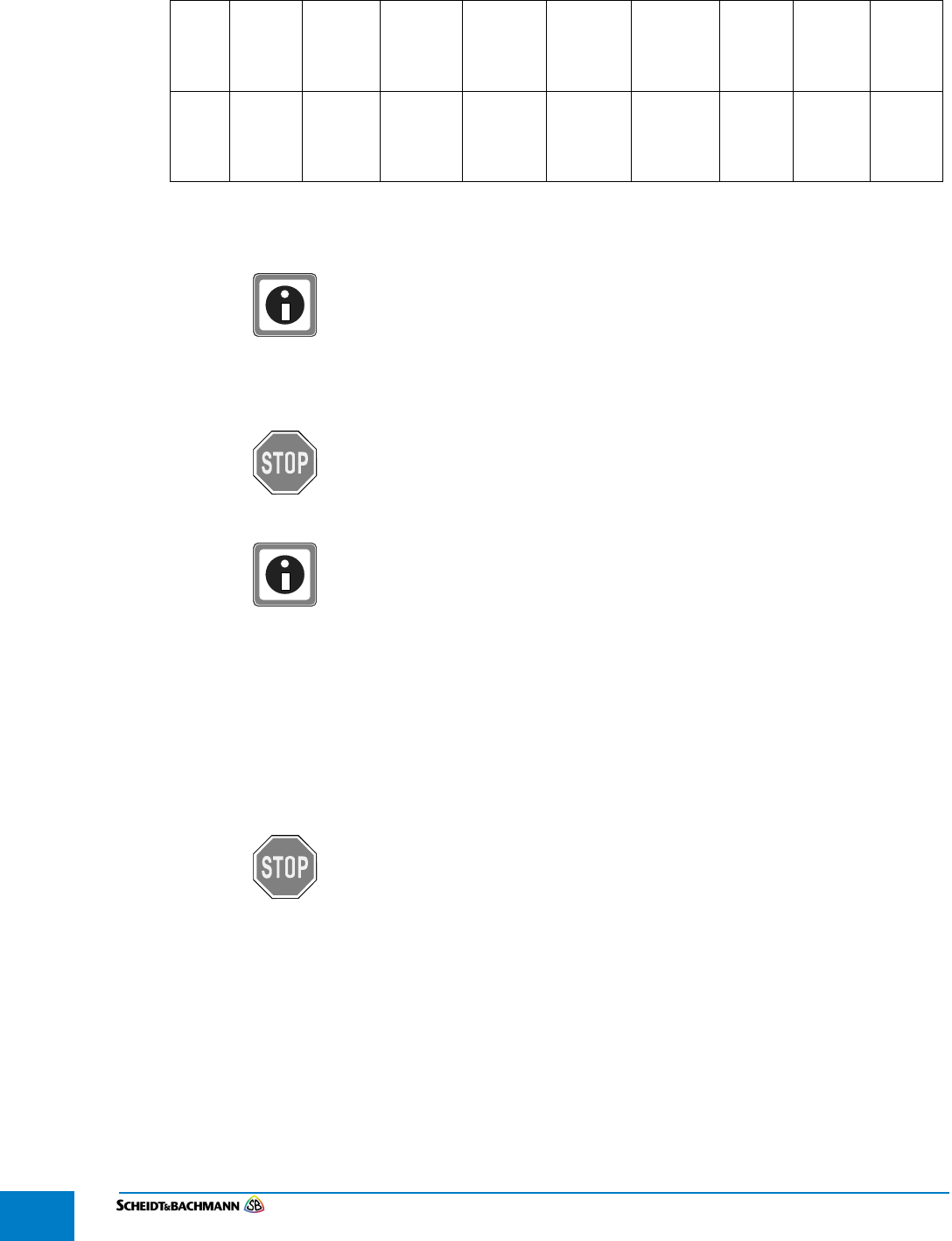
Edit: Stevens Art.#.: 86 -----, Version 1.8 Date:15.06.2016
4-12
4.7.4 Battery Label
The MT 60 provided with a power supply "19V/max 3,3A". The output
voltage imply the feature of safety extra low voltage as a limited power
source. During connection to the ac/dc source the batteries recharge. It
need not more than 4 1/2h to recharge the battery to full condition.
Caution: use this power supply provided by Scheidt & Bachmann only.
Otherwise a damage or risk of fire may cause.
The MT60 provided with a removable battery type FareGo Move MT60
Battery cpl. 86 34471 0.
The Battery consisting of UL-recognized Li-cells and a battery
management system (BMS) are in compliance with UL2054. The safeties
are tested and recognized by an UL-Investigation and reported to BBFS2/
MH45433. Additional to the BMS an internal fuse ensure a "limited power
source" output voltage.
This battery comply to safety standards as follows: IEC60950-1, LPS,
UL2054, IEC62133, UN38.3.
Caution:
Replace battery with type MT60 - 86 34471 0 only! Otherwise it may cause
a Risk of Fire and Explosion.
Do Not Open, Crush, Heat Above +55C or incinerate.
Model
No.
Nominal
Voltage,
V dc
Capacity,
Ah/Wh
Maximum
Charging
Voltage,
V dc
Maximum
Charging
Current, A
Maximum
discharge
Current, A
Dis-charge
Cutoff
Voltage,
Vdc
Cell
Config
xS/yP Cell Mfg.
Cell
Model
Number
2S1P
NCR-
18650
BF
7.2 3.35Ah /
24.12Wh 8.4 1.6 4.8 5.0 2S-1P Panason
ic
NCR-
18650B
F
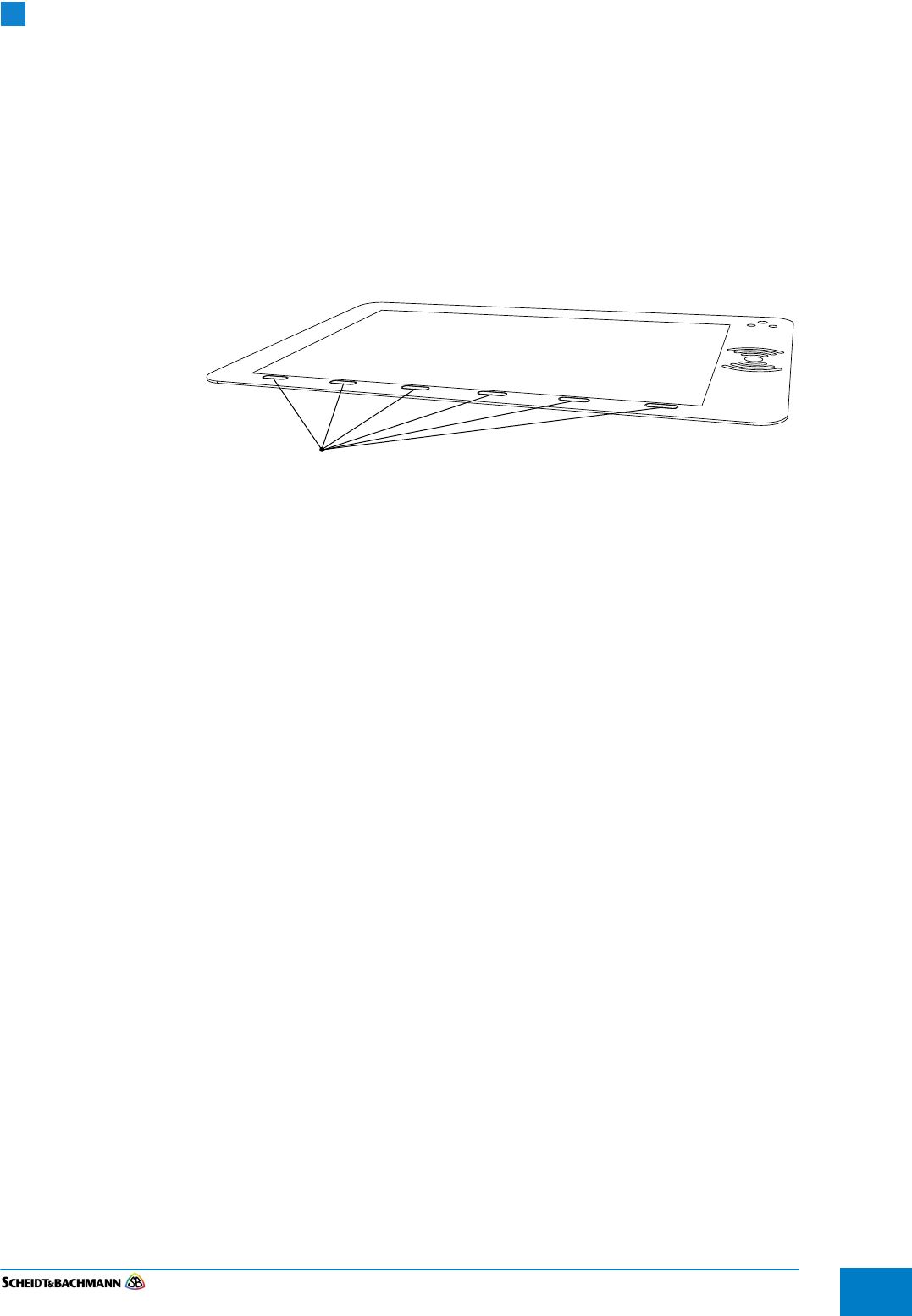
Edit: Stevens Art.#.: 86 -----, Version 1.8 Date:15.06.2016 4-13
Fare collection
systems
4.8 Display and
touchscreen
The device has a high resolution display with a capacitive multi-touch screen.
4.8.1 Technical
Specifications
Screen size: 7"
Resolution: 1.280 x 800 Pixel
Colors: 16,7 Millionen
Touchscreen: kapazitiv, multitouch
Glas: GORILLA® GLASS
Figure 4-7: Display and Touchscreen
If the MT | 60 is rotated, the display is rotated into the required direction
(Transverse and upright).
This is detected by an integrated position sensor
The functions of the hot keys are also rotated when rotating the screen contents.
(This means that for example the function of the upper button is assigned, is
always on the top button).
The integrated light sensor adjusts the brightness of the display automatically to
the ambient brightness. The brightness can also be adjusted manually for each
user.
Hot-Keys

Edit: Stevens Art.#.: 86 -----, Version 1.8 Date:15.06.2016
4-14
THIS PAGE INTENTIONALLY BLANK.
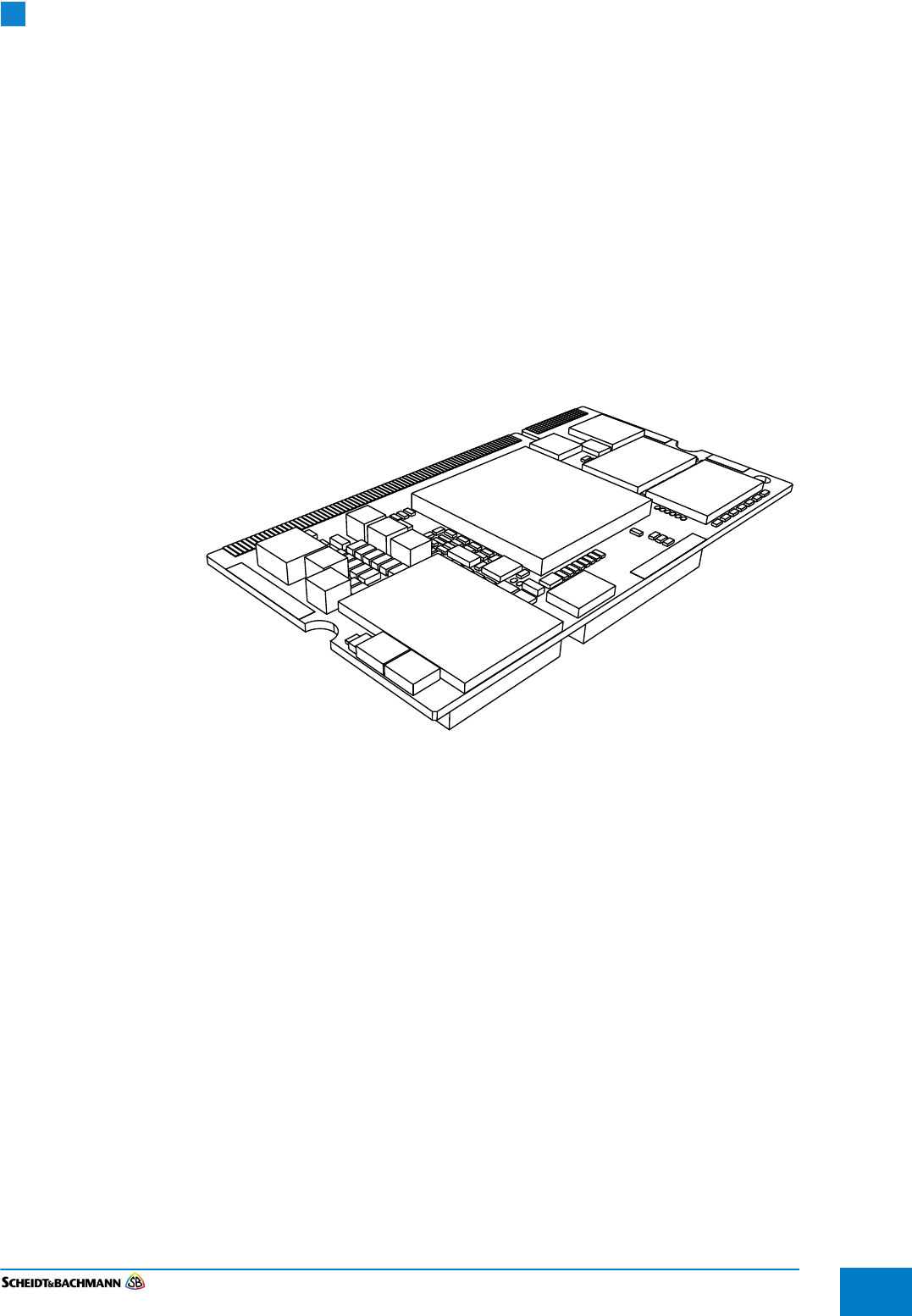
Edit: Stevens Art.#.: 86 -----, Version 1.8 Date:15.06.2016 4-15
Fare collection
systems
4.9 CPU Modul The CPU of the MT|60 is based on a FreescaleTM i.MX6 Plattform.
The MT|60 is equipped with two SD card slots:
The first SD card slot is disposed on the CPU module and is not accessible from
the outside.
The second SD card slot is located on the baseboard and is accessible from the
outside. Write access is possible to the SD card.
4.9.1 Technical
Specifications
Processor (Single Core): FreescaleTM i.MX6 ARM® CortexTM A9, 1.0 GHz
per Core, 1MB Level 2 Cache
Memory: 1 GB
Total Memory: 16 GB of memory via an internal SD card (first SD card slot)
Figure 4-8: CPU Modul

Edit: Stevens Art.#.: 86 -----, Version 1.8 Date:15.06.2016
4-16
THIS PAGE INTENTIONALLY BLANK.
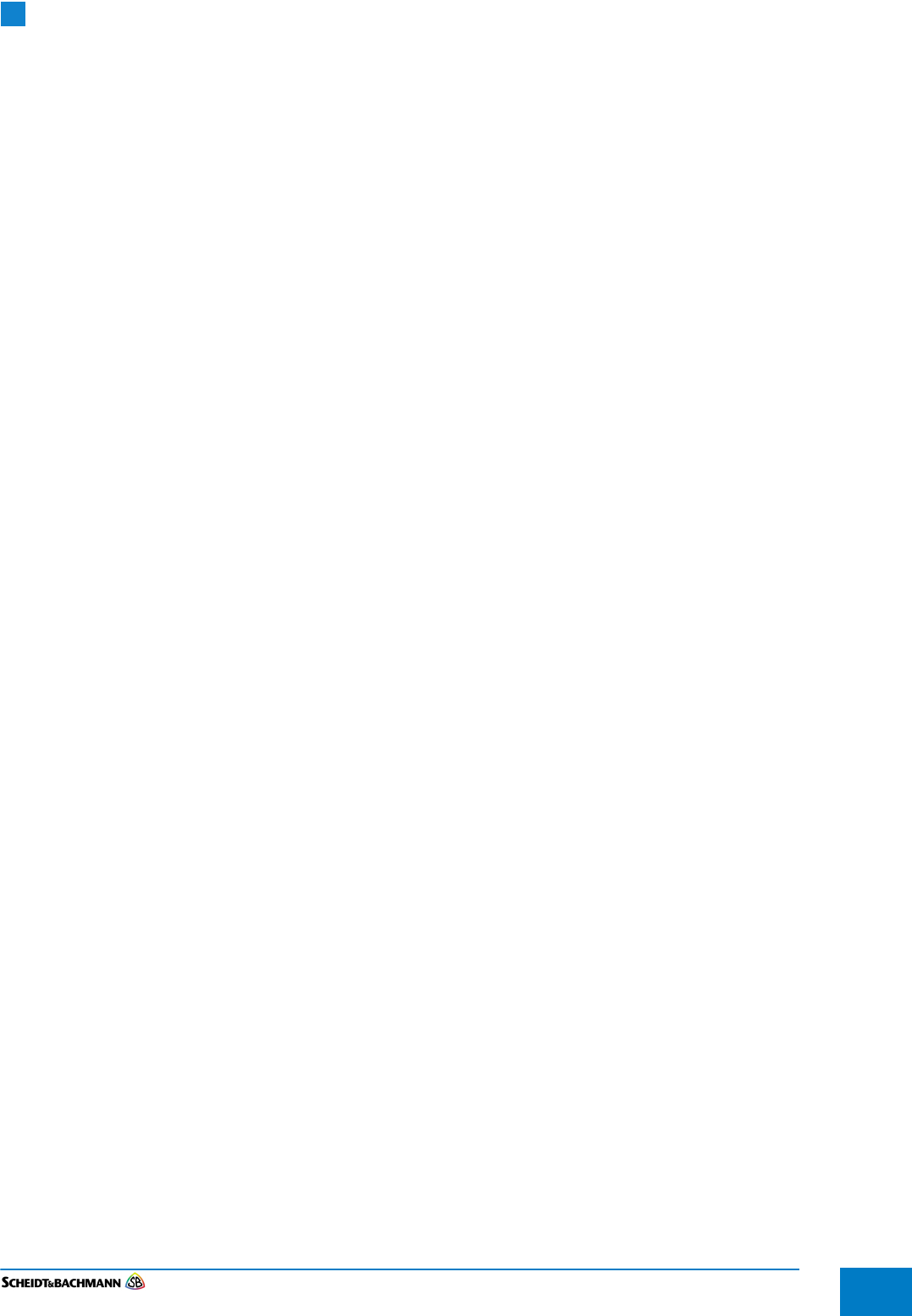
Edit: Stevens Art.#.: 86 -----, Version 1.8 Date:15.06.2016 4-17
Fare collection
systems
4.10 NFC - Reader For the processing of contactless media ISO 14443 A or B, the device has a
Smart Card Terminal.
The Smart Card Terminal was developed as a multi-application terminal and
offers a maximum of flexibility in the processing of contactless media. The intel-
ligent reader supports the parallel use of different smart card standards. The
reader automatically recognizes the card standard when presenting the card.
Additional Smart Card standards can be added through a software download
and a corresponding SAM extension in most cases.
The terminal has a total of 2 ISO 7816 SAM slots.
Two of the slots are accessible from the outside. To access the additional two
SAM slots, the device must be opened.
4.10.1 Cards
Standards
MIFARE Classic 1K/4K,
MIFARE Plus 2K/4K S/X
MIFARE DESfire EVO/EV1
MIFARE Ultralight
Smart MX
Innovision jewel
NFC Smart-Card Emulation (passiv)
4.10.2 eTicketing
Standards
VDV-KA
custom standard
Scheidt & Bachmann Smart Card Standard

Edit: Stevens Art.#.: 86 -----, Version 1.8 Date:15.06.2016
4-18
THIS PAGE INTENTIONALLY BLANK.
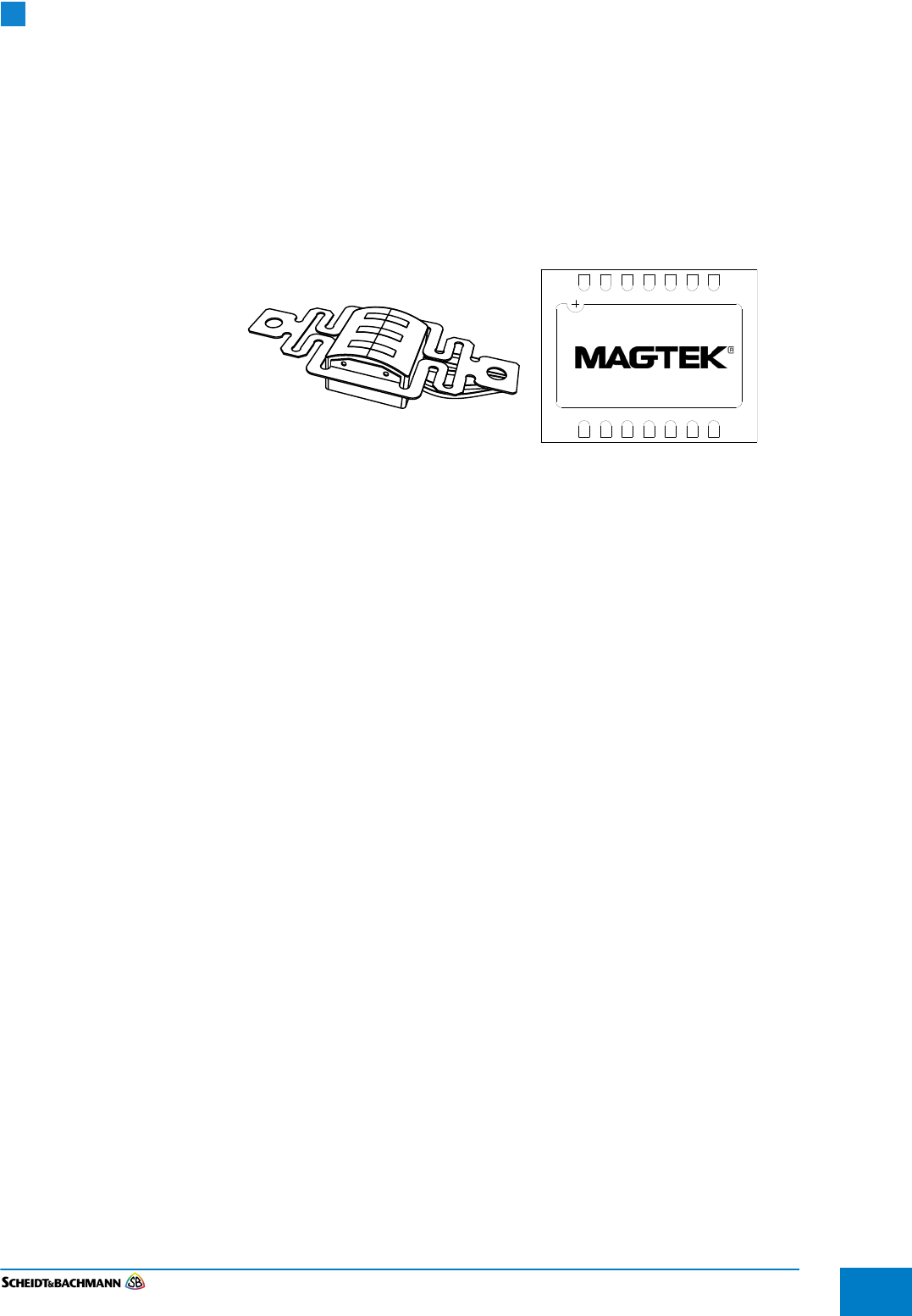
Edit: Stevens Art.#.: 86 -----, Version 1.8 Date:15.06.2016 4-19
Fare collection
systems
4.11 Magnetic
Stripe Reader
The MT|60 is equipped with a reader to read ISO 7811 magnetic cards with
three-lane side strips according to ISO 7811.
The card reader is integrated in the case of the MT|60 and allows a easy and
quick reading of the magnetic strip.
4.11.1 Technical
Specifications
Magnetic Card Standard: ISO 7811, ISO 7813
Reading Speed: 7 - 250 cm/s
Figure 4-9: Magnetic stripe reader module and magnetic head

Edit: Stevens Art.#.: 86 -----, Version 1.8 Date:15.06.2016
4-20
THIS PAGE INTENTIONALLY BLANK.
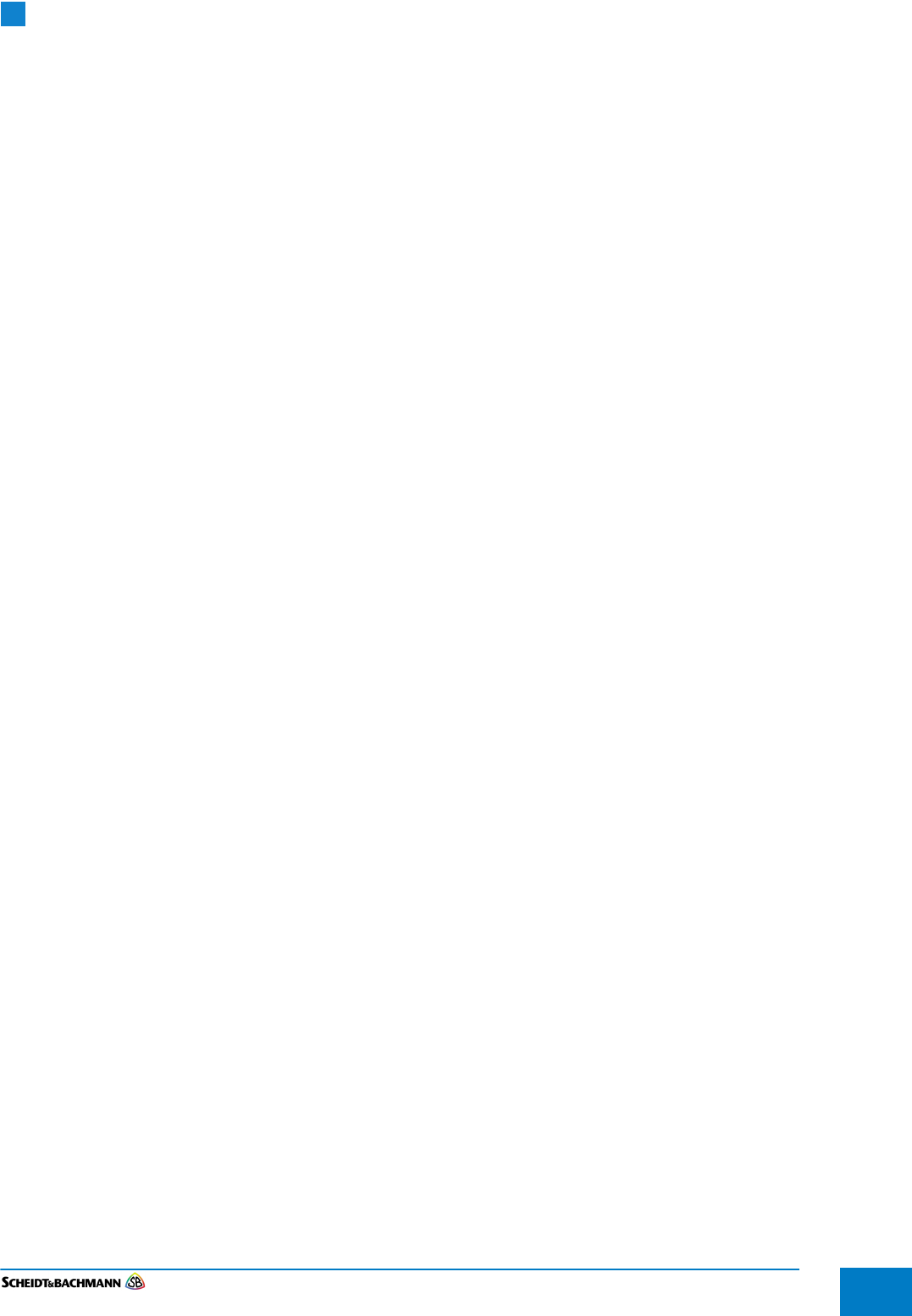
Edit: Stevens Art.#.: 86 -----, Version 1.8 Date:15.06.2016 4-21
Fare collection
systems
4.12 Commu-
nication
Modules
The MT|60 has the following communication modules:
Bluetooth
WiFi
Mobile
USB
4.12.1 Bluetooth The integrated Bluetooth v3.0 EDR interface includes: A2DP (Advanced Audio
Distribution Profile), HSP (Headset Profile) and HDP (Health Device Profile) in
addition to the normal Bluetooth connectivity.
4.12.2 WiFi The integrated WiFi interface interface complies with the standard IEEE802.11
a/b/g/n.
4.12.3 Mobile The MT|60 supports the following wireless data connectivity standards:
GPRS
EDGE
UMTS
HSDPA oder HSPA+
The device has an externally accessible slot for a micro-SIM card.
4.12.4 USB The device is equipped with a micro USB 2.0 interface
USB OTG (USB On-The-Go).
4.12.5 GPS (optional) The MT|60 can optionally be equipped with GPS.

Edit: Stevens Art.#.: 86 -----, Version 1.8 Date:15.06.2016
4-22
THIS PAGE INTENTIONALLY BLANK.
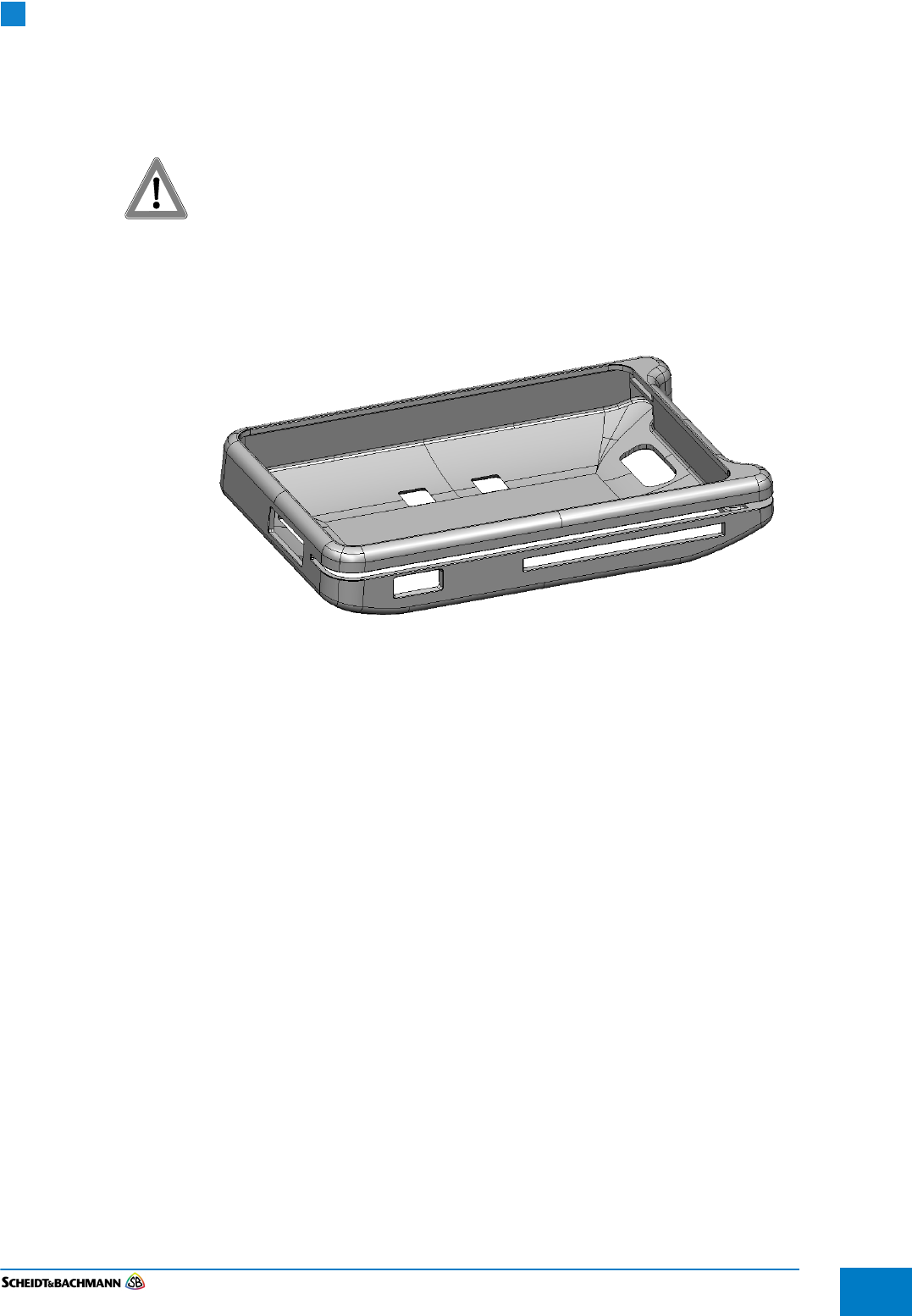
Edit: Stevens Art.#.: 86 -----, Version 1.8 Date:15.06.2016 4-23
Fare collection
systems
4.13 Protective
Cover
The protective cover improves the drop resistance of the MT-60.
The cover is an integral part of the MT-60 and can not be removed without tools.
In some countries it is not allowed to operate the MT-60 without the
protective cover to comply with the FCC guidelines.
The device remains fully usable with the protective cover on.
Figure 4-10: Protective Cover

Edit: Stevens Art.#.: 86 -----, Version 1.8 Date:15.06.2016
4-24
THIS PAGE INTENTIONALLY BLANK.
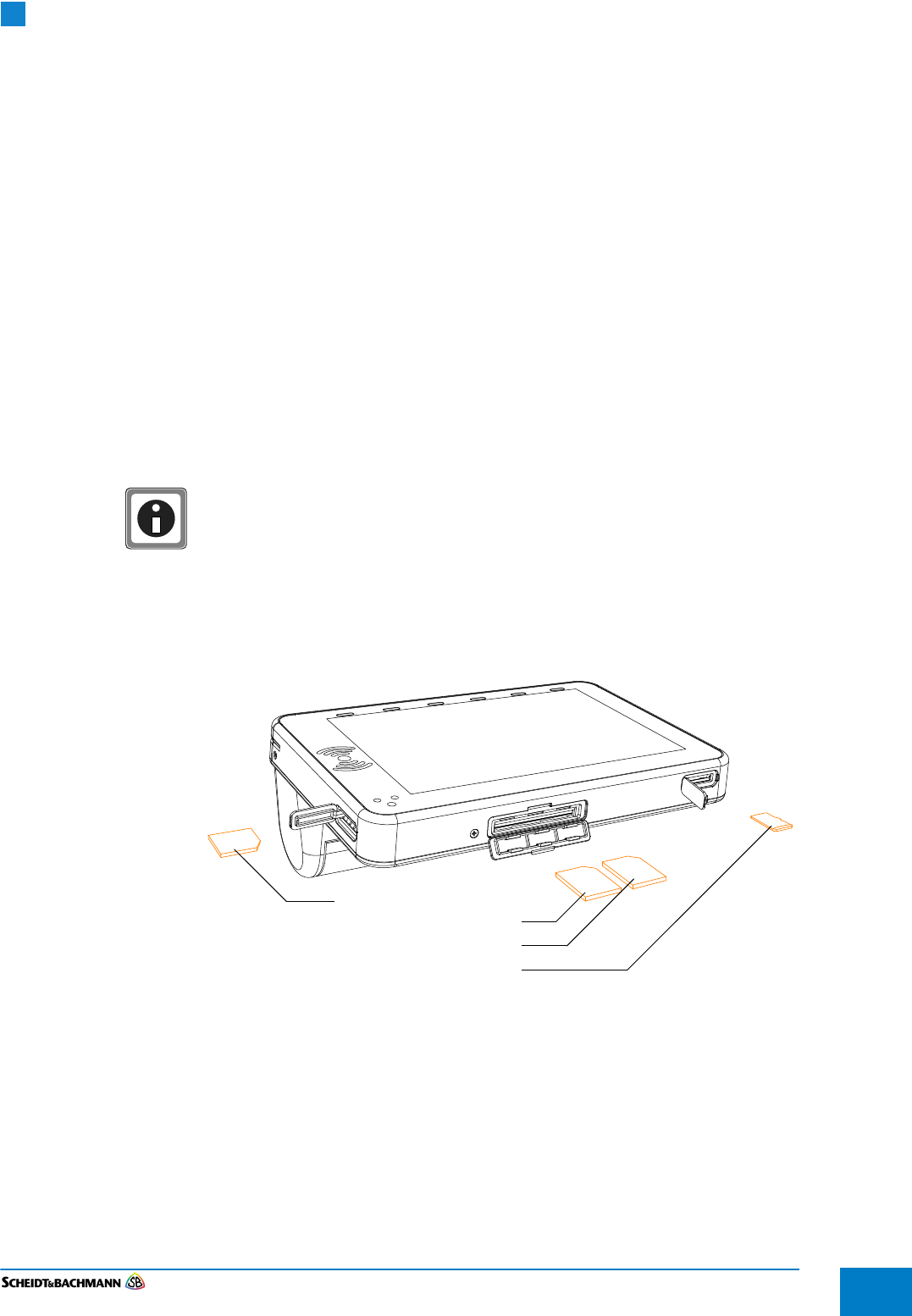
Chapter 5
Commissioning
Edit: Stevens Art.#.: 86 -----, Version 1.8 Date:15.06.2016 5-1
Fare collection
systems
Chapter 5 Commissioning
For the first commissioning, the following steps are necessary
Inserting a micro SIM card (see Chapter 5.1)
Inserting the SAM card/s for the Smart Card Reader (see Chapter 5.1)
Insert a microSD card (see Chapter 5.1)
Inserting the battery (see Chapter 5.2)
Charging the battery (see Chapter 5.3)
Inserting a paper roll (see Chapter 5.4)
5.1 Insert SIM,
SAM, and
micro SD
Card
To insert a micro SIM, -SAM - or a micro SD card, proceed as follows:
Open the rubber covers of the to be equipped card slot.
Place the desired card into the appropriate card slot. (see Fig. 5-1)
All card slots have a spring mechanism that audible and tactile snaps into
place when the inserted card is properly positioned
To remove a card, push the card a little further into the card slot until an
audible and tactile trigger of the spring mechanism to be heard.
When you release the card now, it is automatically pushed out by the
spring mechanism.
This makes it possible to easily remove the card now.
Close the rubber covers of all card slots.
Figure 5-1: Insert SIM, SAM and micro SD card
5.2 Insert battery To replace the battery, proceed as follows:.
Insert the battery to the guiding rails and slide it over the guiding rails as far
until the battery snaps into place
SAM 1
micro SIM-Card
SAM 2
microSD Card
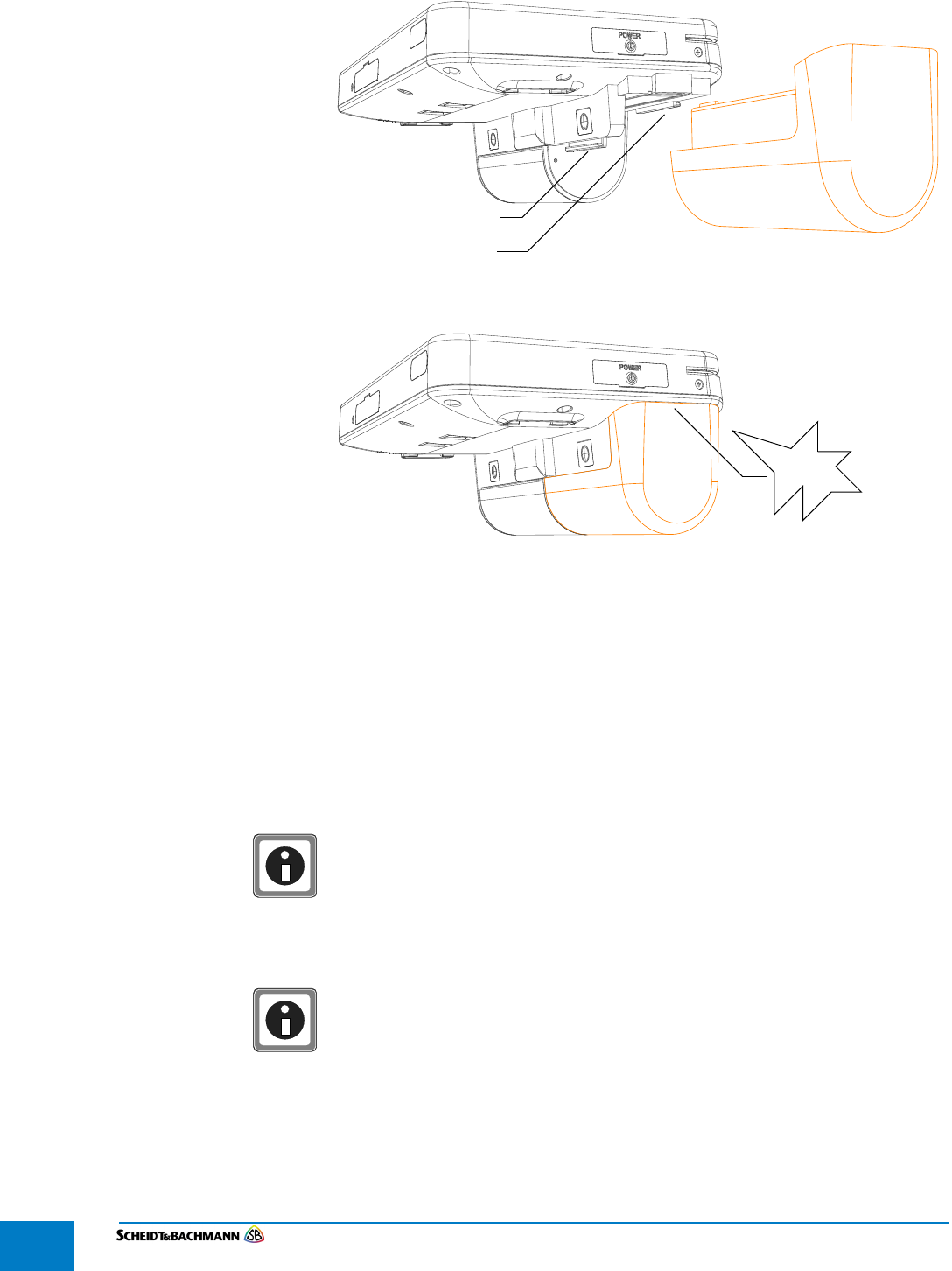
Chapter 5
Commissioning
Edit: Stevens Art.#.: 86 -----, Version 1.8 Date:15.06.2016
5-2
Figure 5-2: Installing the Battery step 1
Figure 5-3: Installing the Battery step 2
5.3 Recharge
battery
The battery can be charged in two ways. At one via the contacts on the bottom
of the unit. For this purpose, the device is placed on a charging station (cradle).
To charge the battery via the charging socket, proceed as follows.
Open the rubber covers, under which the charging soccer is located. (see
Fig. 5-4)
Plug the power supply cord into the charging socket.
Please use exclusively the charging options provided by Scheidt &
Bachmann (power supply and Cradle).
If using, power supplies do not meet the specifications, the unit may be
damaged.
When the battery is fully charged, disconnect the charger cable and close the
rubber cover.
The unit can not be loaded via the micro USB connector.
The micro USB connector is used exclusively for data exchange.
guiding rails
guiding rails
KLICK
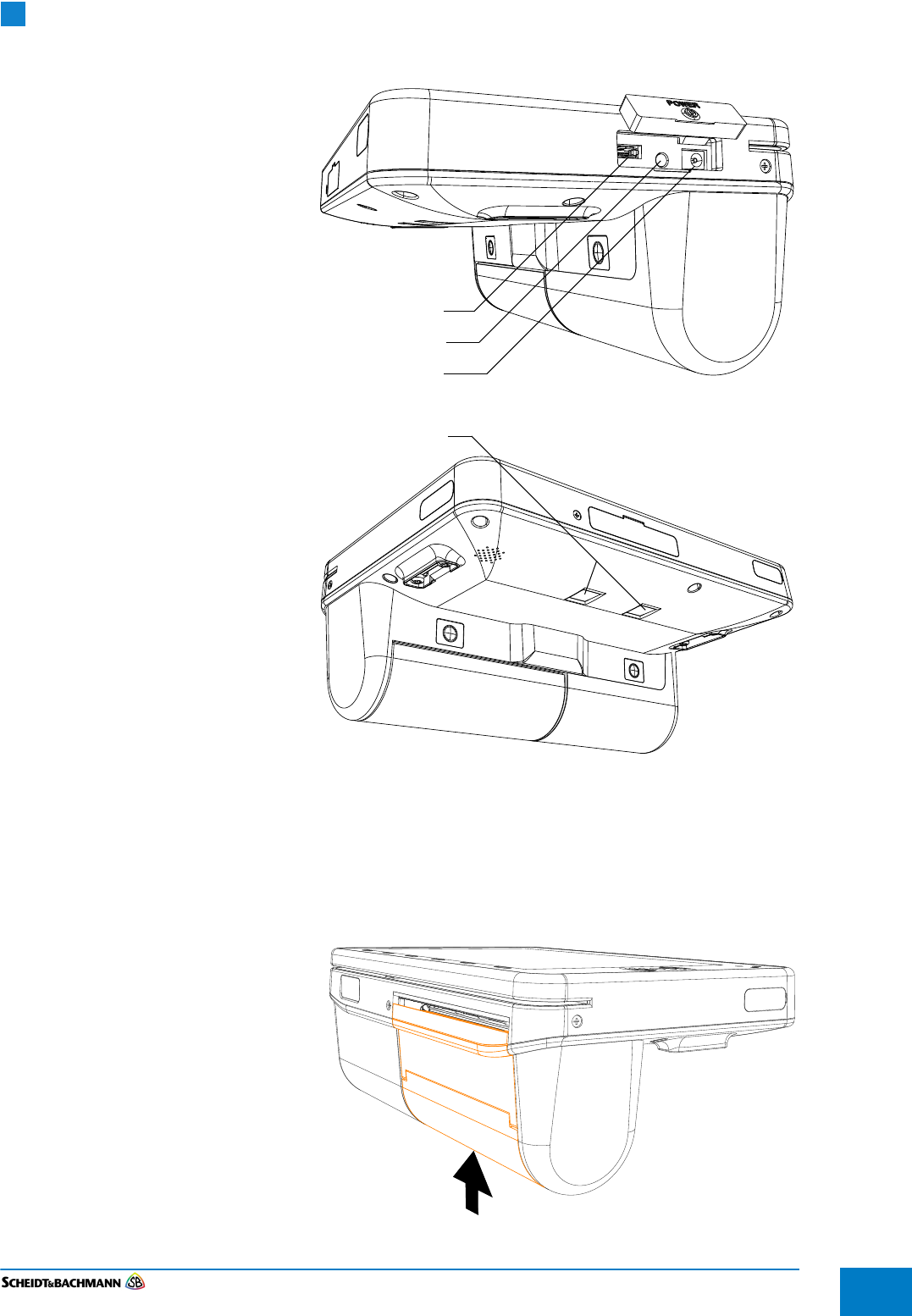
Chapter 5
Commissioning
Edit: Stevens Art.#.: 86 -----, Version 1.8 Date:15.06.2016 5-3
Fare collection
systems
Figure 5-4: micro USB, On/Off Button, Charging socket, Charging contacts
5.4 Insert Paper To load the paper, proceed as follows.
Press from below against the paper tray cover until the upper part of the
paper tray cover bounces off by a few millimeters to the front.
The paper tray is now unlocked.
Figure 5-5: Loading Paper Step 1
micro USB socket
On/Off Button
Charging socket
Charging contacts
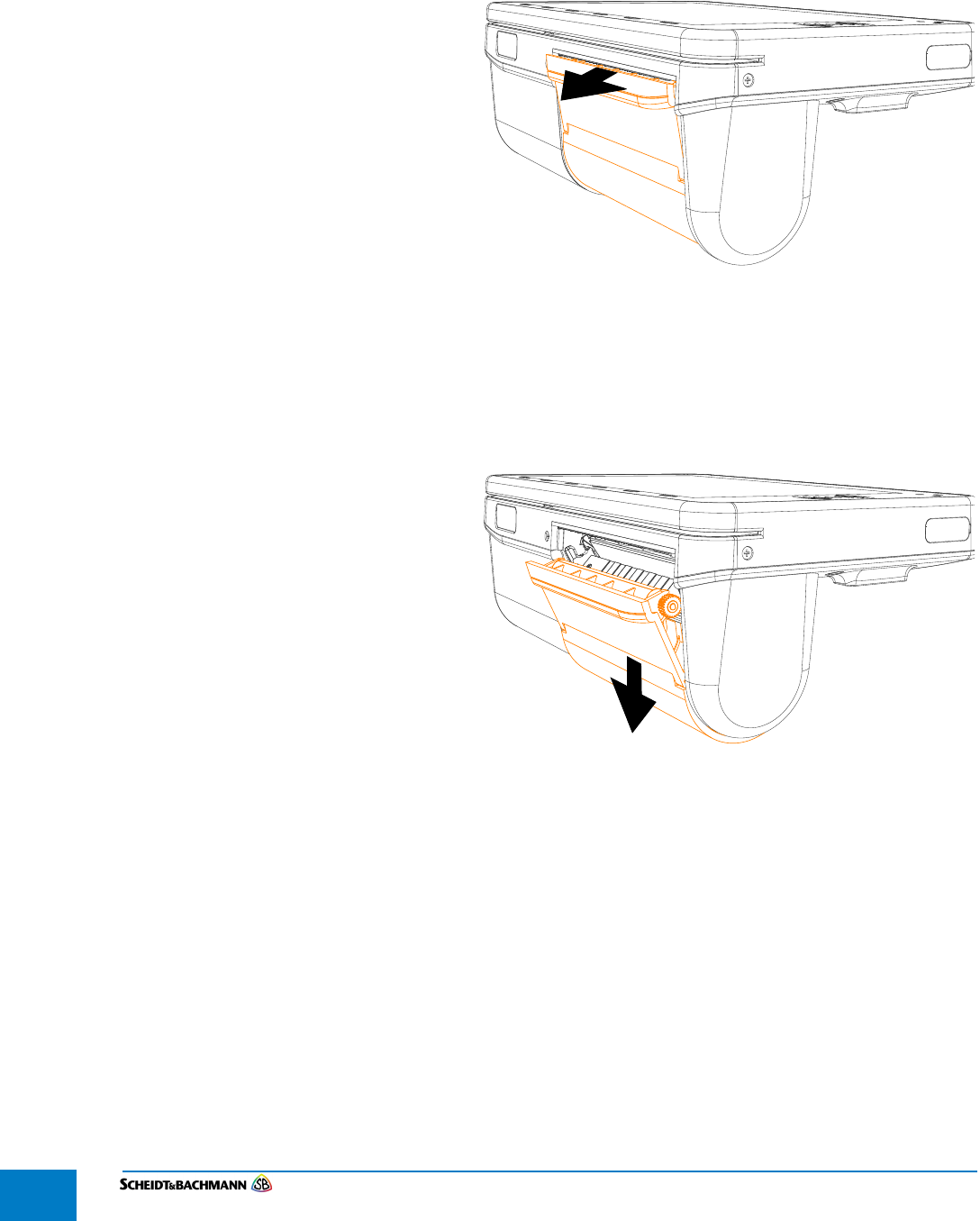
Chapter 5
Commissioning
Edit: Stevens Art.#.: 86 -----, Version 1.8 Date:15.06.2016
5-4
Next step is to drag the paper cover on the top edge to the rear.
Now the paper tray cover can be folded down.
Figure 5-6: Loading Paper Step 2
Insert the correct paper roll into the designated indentation in the paper tray
cover.
Roll the paper from the roll as far that the paper protrudes a few centimeters
out of the printer after loading the paper
Figure 5-7: Loading Paper Step 3
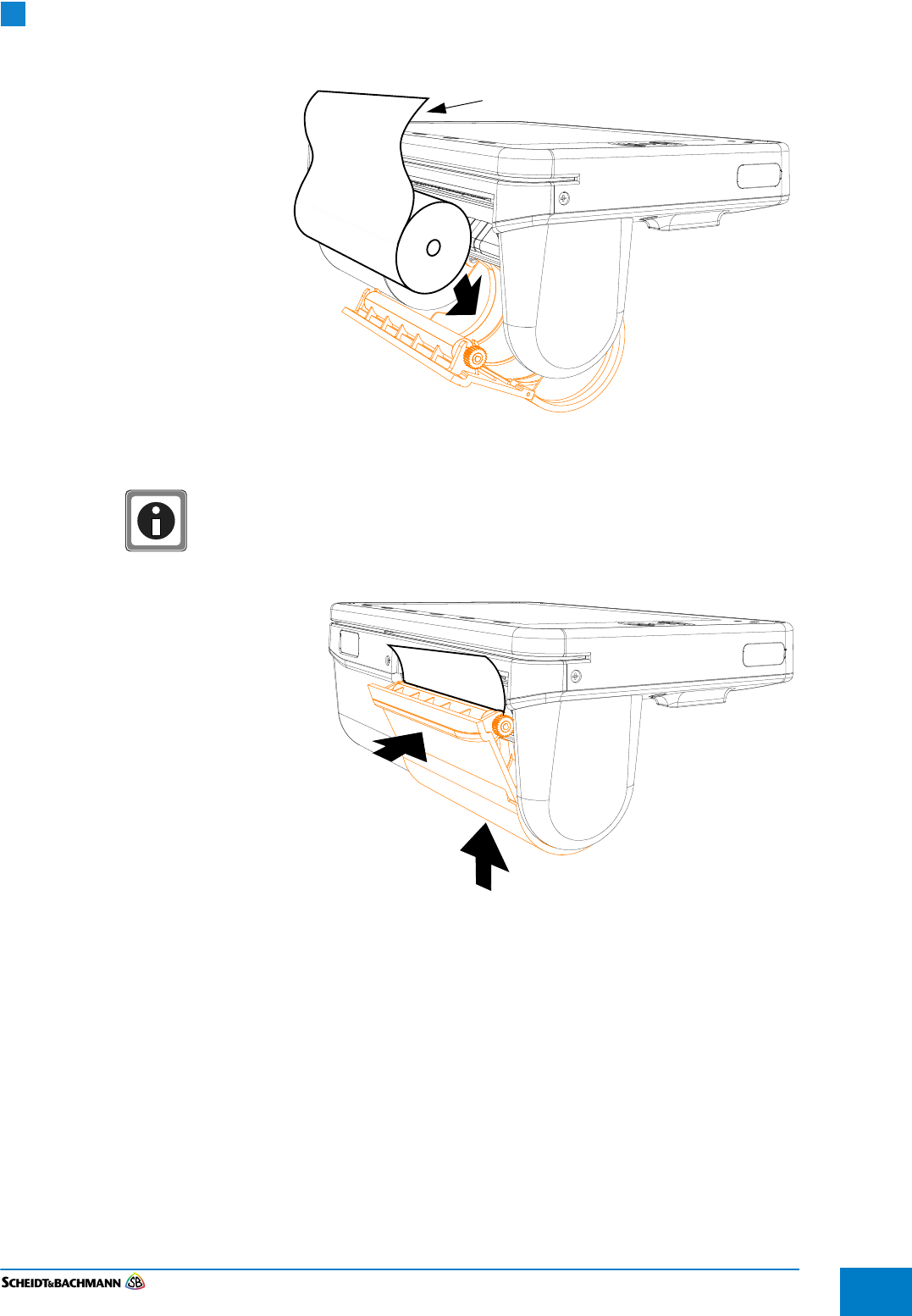
Chapter 5
Commissioning
Edit: Stevens Art.#.: 86 -----, Version 1.8 Date:15.06.2016 5-5
Fare collection
systems
Figure 5-8: Loading Paper Step 4
The thermo sensitive side of the paper faces toward the printer
Close the paper tray cover by pressing below against the cover until the top
of the paper tray cover snaps into place.
Figure 5-9: Loading Paper Step 5
To lock the paper tray cover, press against the upper edge of the paper tray
cover until it is completely latched and locked.
Thermal coating
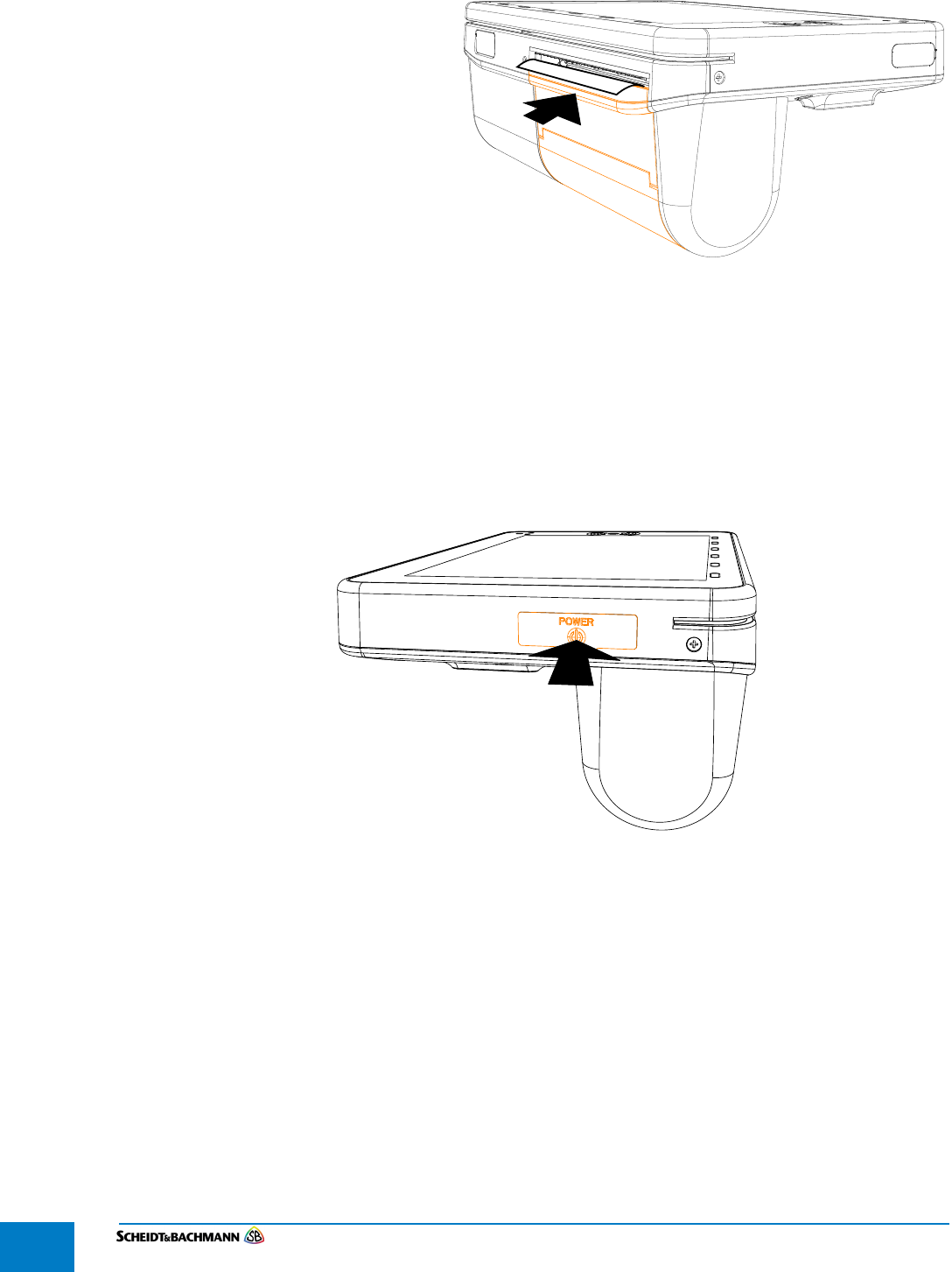
Chapter 5
Commissioning
Edit: Stevens Art.#.: 86 -----, Version 1.8 Date:15.06.2016
5-6
Figure 5-10: Loading Paper Step 6
5.5 Switch
On/Off
Turning on and off of the MT|60 is done via the centrally disposed on/off switch.
To turn on the MT|60, press the switch for 2-3 seconds.
To turn off the MT|60 press the on/off switch for a longer time.
However, the switching process needs to be confirmed by an additional display
dialog.
Figure 5-11: On/Off switch
5.6 First Start
In the delivery state or after resetting to factory settings, the MT|60 is equipped
with the standard components of the Android operating system and a demo
application to test the operation of the Barcode Imager, the smart card reader,
the magnetic stripe reader and the printer. For correct operation, the following
settings should be checked and adjusted on first use:
Regional Settings
Time and Time Zone
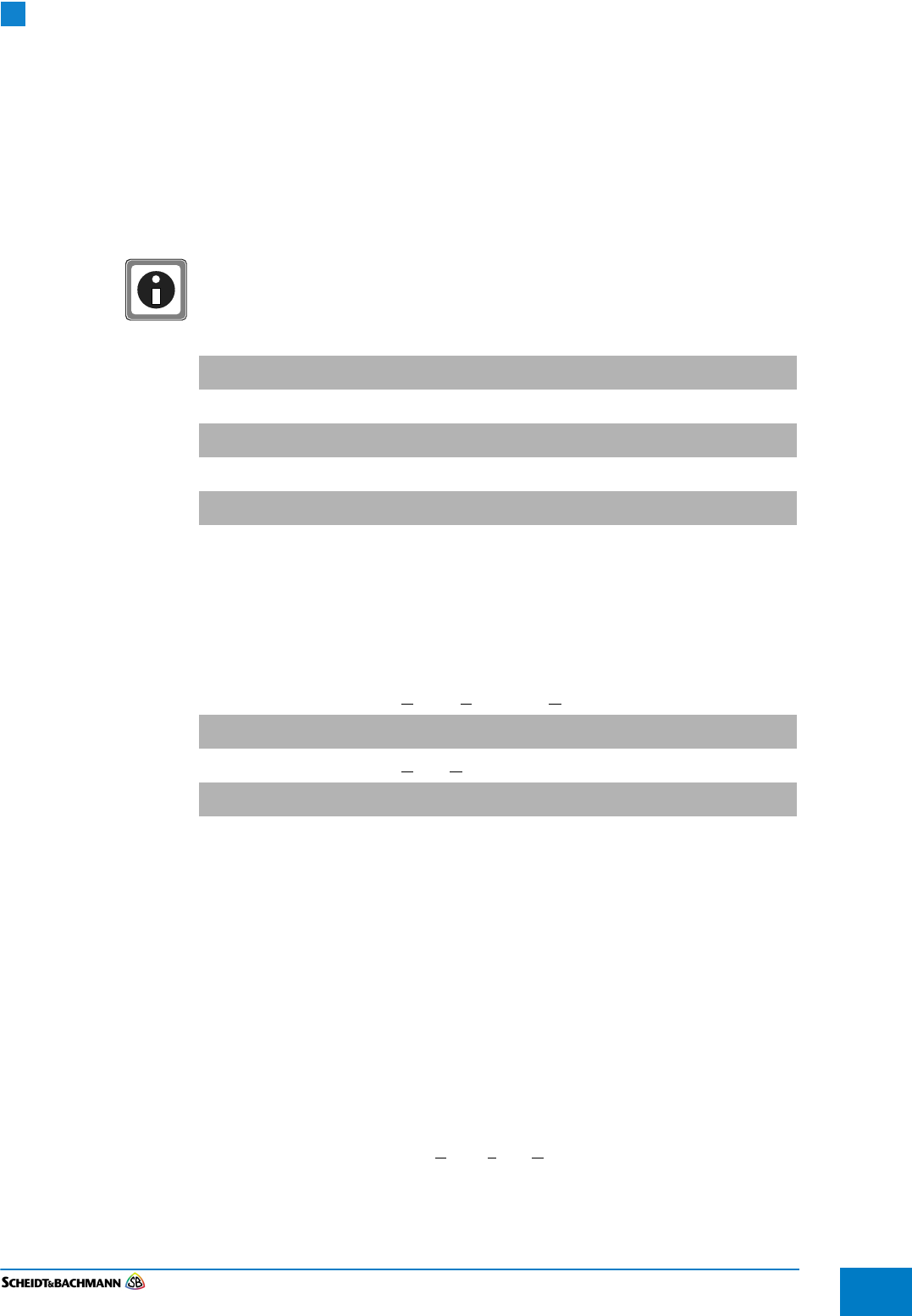
Chapter 6
Explanation of terms
Edit: Stevens Art.#.: 86 -----, Version 1.8 Date:15.06.2016 6-1
Fare collection
systems
Chapter 6 Explanation of terms
In the context with manuals from Scheidt & Bachmann many terms and abbrevi-
ations are used. Some terms are defined in industry standard, others are spe-
cific to the application (e.g. Networking and telecommunications terms, etc..),
others are specifically defined by Scheidt & Bachmann.
All listed items are exclusively associated with products of Scheidt &
Bachmann. Not all terms are valid for the product that is described in this
manual.
A
A Ampere
B
Bluetooth Radio-based data transmission standard
C
CE
Communauté Européenne - With the CE marking,
the manufacturer declares distributor or EU
representative in accordance with EU Regulation
765/2008, "that the product meets the applicable
requirements set out in the "Community
harmonization legislation providing" providing for its
affixing
CPU Central Processing Unit
D
DC Direct Current
E
EDGE Enhanced Data Rates for mobile networks
EMC
EMC electromagnetic compatibility
The EMC refers to a usually desirable state that
technical devices do not interfere with each other
disruptive due to unwanted electrical or
electromagnetic effects.
EN
The European Standards (EN) are rules that have
been ratified by one of the three European
Committee for Standardization.
Error Code Also referred to as an error message. Error
information is available on the Customer Display,
Service Terminal Display, or printed report
concerning a TVM fault or malfunction.
ESD The Electrostatic Discharge symbol indicates the
potential for serious damage to the printed circuit
boards or other Electrostatic Discharge (ESD)
sensitive devices in the machine.
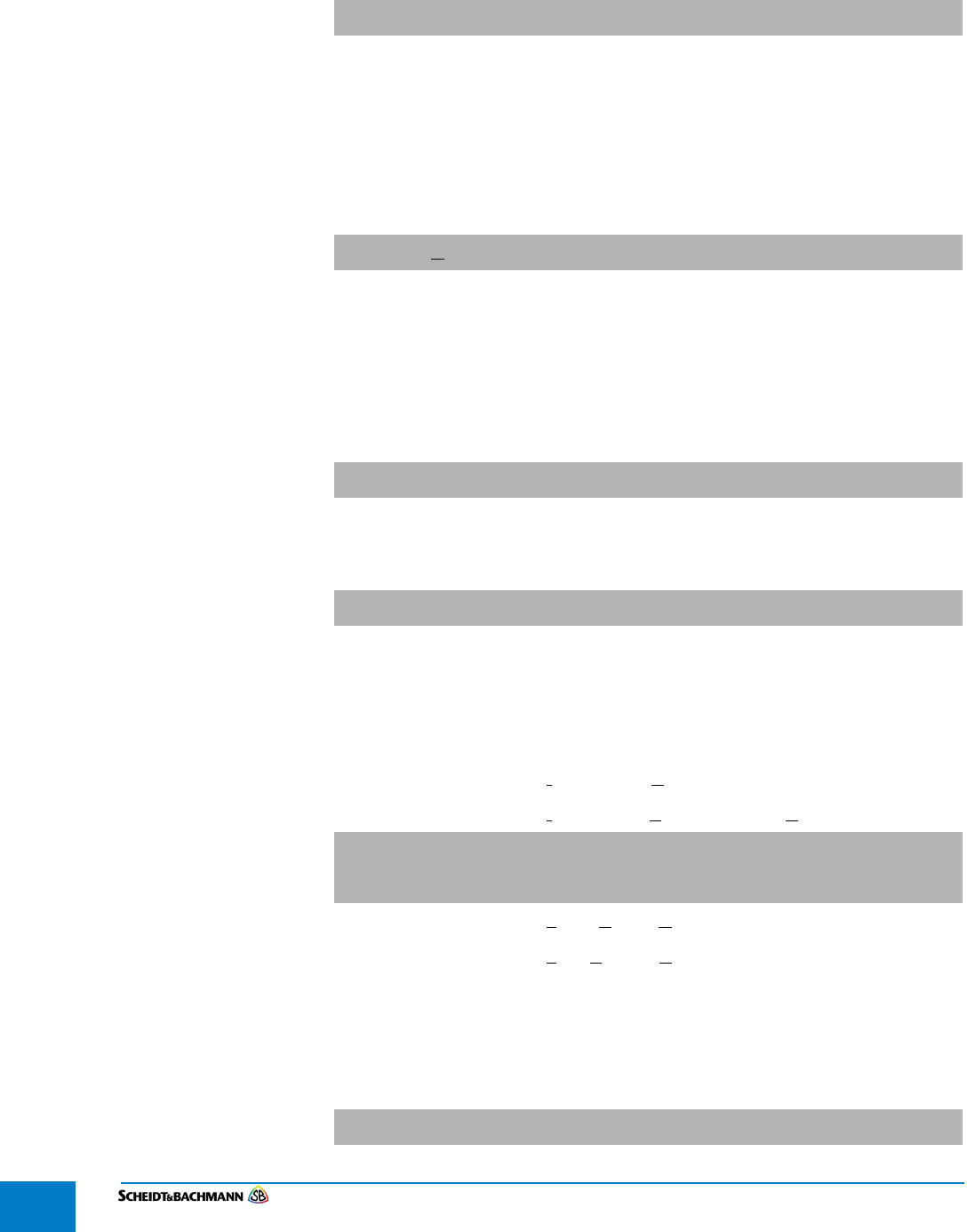
Chapter 6
Explanation of terms
Edit: Stevens Art.#.: 86 -----, Version 1.8 Date:15.06.2016
6-2
Ethernet Card The Ethernet Card is installed in the main computer.
It provides a communications interface between the
TVM and an ethernet Local Area Network (LAN).
F
FCC
Federal Communications Commission - The FCC is
(amateur radio, etc.) as well as responsible
regulatory authority for communications devices
such as radios, televisions and computers for
various wireless services. It checks the devices for
compatibility with the own and other standards.
Flash Card The flash card is a storage module (PCMCIA) that
is used for TVM initialization and data storage.
G
Gorilla Glass
Gorilla Glass is a protected wordmark for a thin
chemically toughened glass from the group of the
US manufacturer Corning of aluminosilicate
glasses
GPS Global Positioning System - radio-based data
transmission standard
GPRS General Packet Radio Service
H
HSDPA High Speed Downlink Packet Access
Hotkey Quick selection button that can be individually
assigned with a function.
I
IC Industry Canada - Telecommunications Appliances
accreditation standard
IP
International Protectioncodes - The IP protection
specify the degree of protection of the housing
against contact, foreign bodies and water.
ID Identification Number
IEC International Electro-technical Commission
K
L
LCD Liquid Crystal Display; see LCD Display.
LED Light Emitting Diode
LCD Display Part of the Customer Display on the TVM.
Light Sensor
A light sensor is a electronic component that
converting light, using the photoelectric effect, in an
electrical signal or shows a electrical resistance
depending of the incident radiation
M
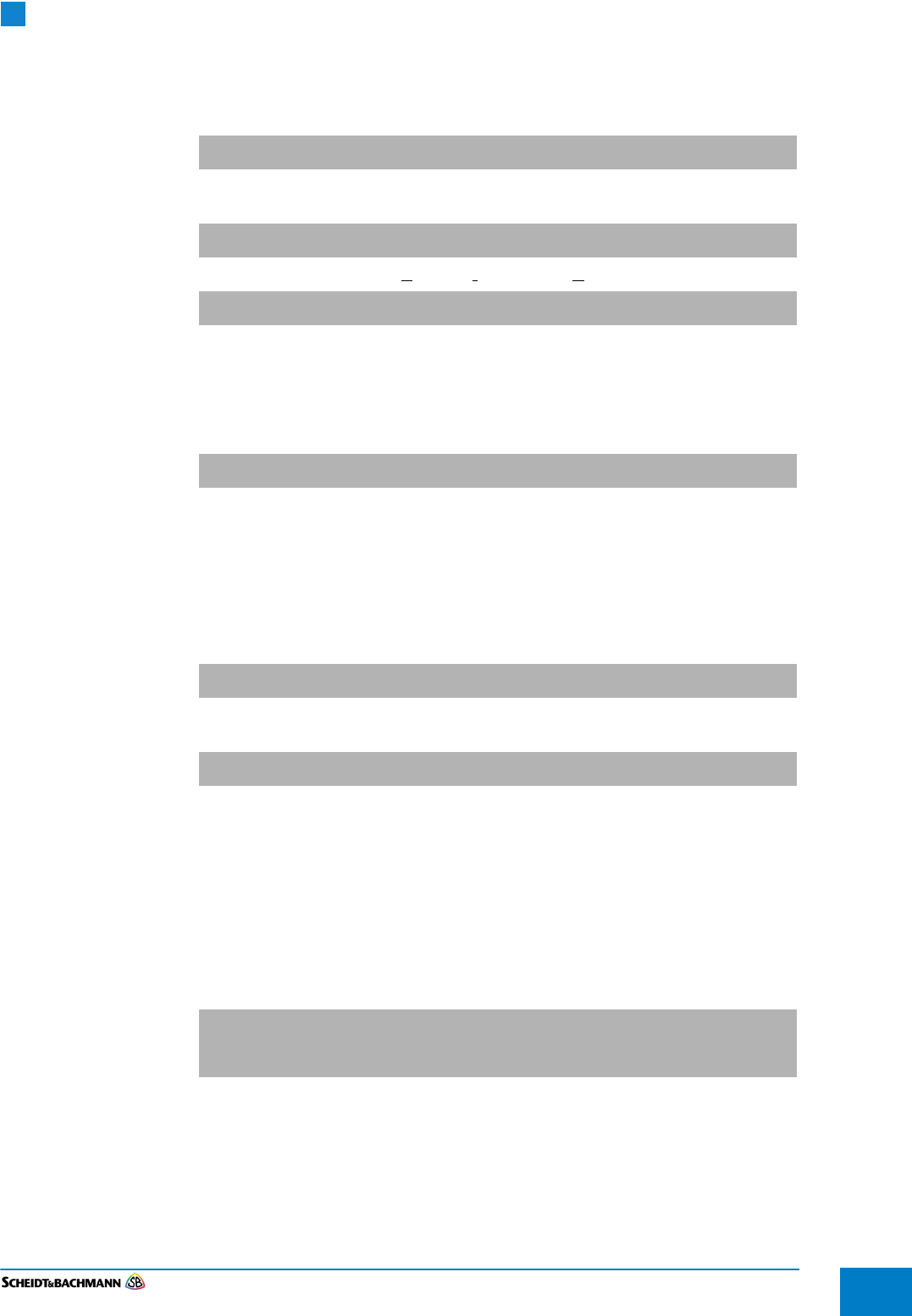
Chapter 6
Explanation of terms
Edit: Stevens Art.#.: 86 -----, Version 1.8 Date:15.06.2016 6-3
Fare collection
systems
MT|60 Mobil Terminal 60 = Characteristics of the device
Mobile Radio-based data transmission standard
N
NFC Near Field Communication - Radio-based data
transmission standard
P
PIN Personal Identification Number
R
RoHS
Restriction of Hazardous Substances - Restriction
of the use of certain hazardous substances in
electrical and electronic equipment
R&TTE Guidelines for radio equipment and
Telecommunication Terminal Equipment
S
SIM-Karte
Subscriber Identity Module - The SIM card is a card
that is plugged into a mobile phone and is used to
identify the user within the network
SAM Secure Access Module
SD Karte Secure Digital Memory Card - Data Storage Device
S & B Scheidt & Bachmann
T
Touch Screen The Touch Screen is part of the Customer Display.
It select inputs by pressing on the screen.
U
UL
Underwriters Laboratories - An organization tests
products, components, materials and systems,
whether they meet specific requirements. If this is
the case, these products may show the chargeable
UL Mark, as long as they meet the prescribed
standards
UMTS Universal Mobile Telecommunications System
USB Universal Serial Bus - Contact-based
communication standard
V
W
WEEE
Waste of Electrical and Electronic Equipment - The
WEEE Directive, the EU Directive 2002/96 / EC to
reduce the increasing amount of electronic waste
from disused electrical and electronic equipment
WLAN Wireless Local Area Network - Radio-based data
transmission standard

Chapter 6
Explanation of terms
Edit: Stevens Art.#.: 86 -----, Version 1.8 Date:15.06.2016
6-4
THIS PAGE INTENTIONALLY BLANK.